In late June, Andrea and I headed over to Vancouver Island and up to Port McNeill to fulfill a long-held dream of kayaking in the Broughton Archipelago, between Vancouver Island and the mainland, in southern Queen Charlotte Strait.
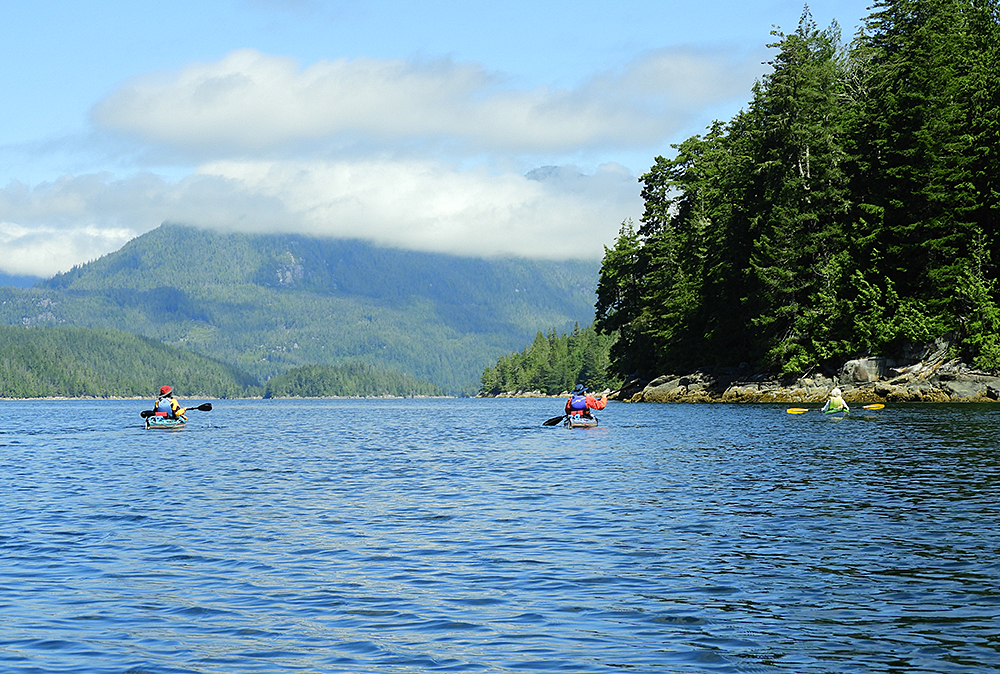
With hundreds of islands, lovely shorelines, beautiful forests and mountains, and loads of interesting wildlife, the Broughton Archipelago is one of B.C.’s premier kayaking destinations.
Lots of preparation was needed for a week of kayaking with four nights of tenting.
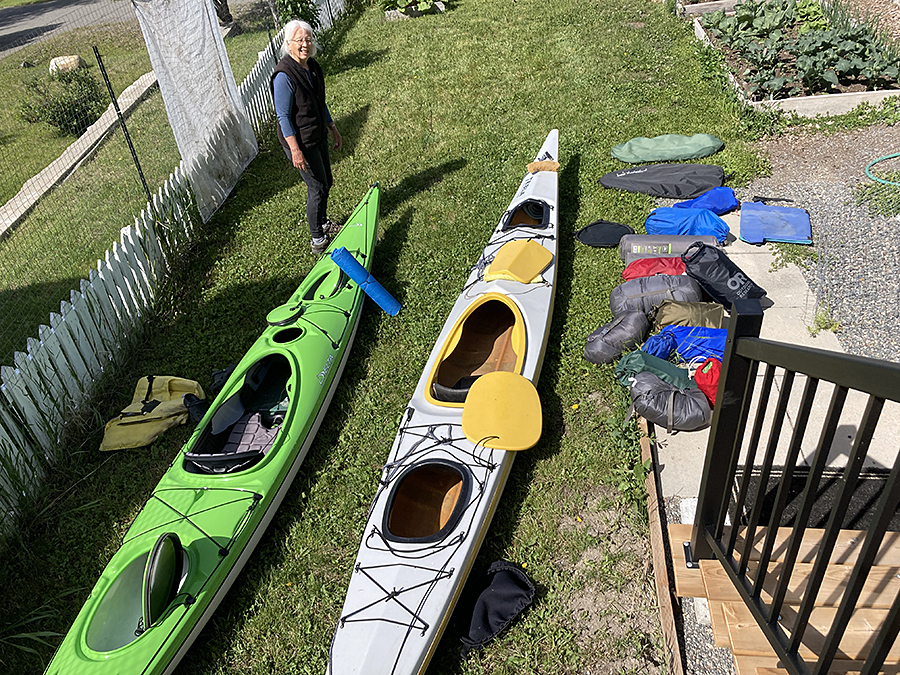
Will it all fit in? Doing a test pack in our yard at home.
In Port McNeill we joined our friends Roy and Heather and met Bruce McMorran, the owner of Paddlers Inn at the Broughtons. He ran us out to his lodge with his boat, along with other kayakers. Check it out: Paddlers Inn
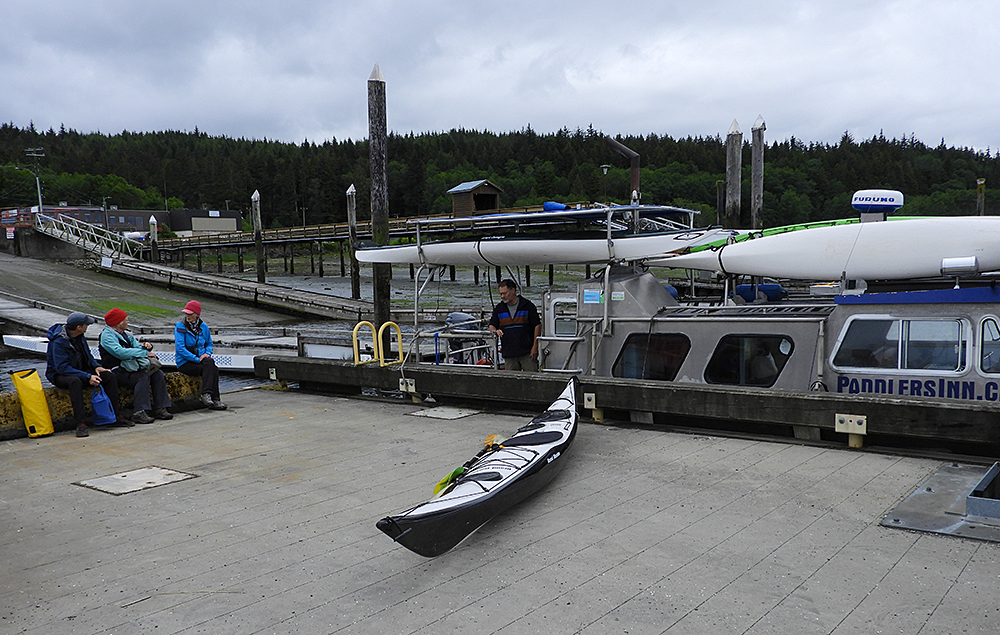
Loading kayaks on to the Paddlers Inn boat in Port McNeill.
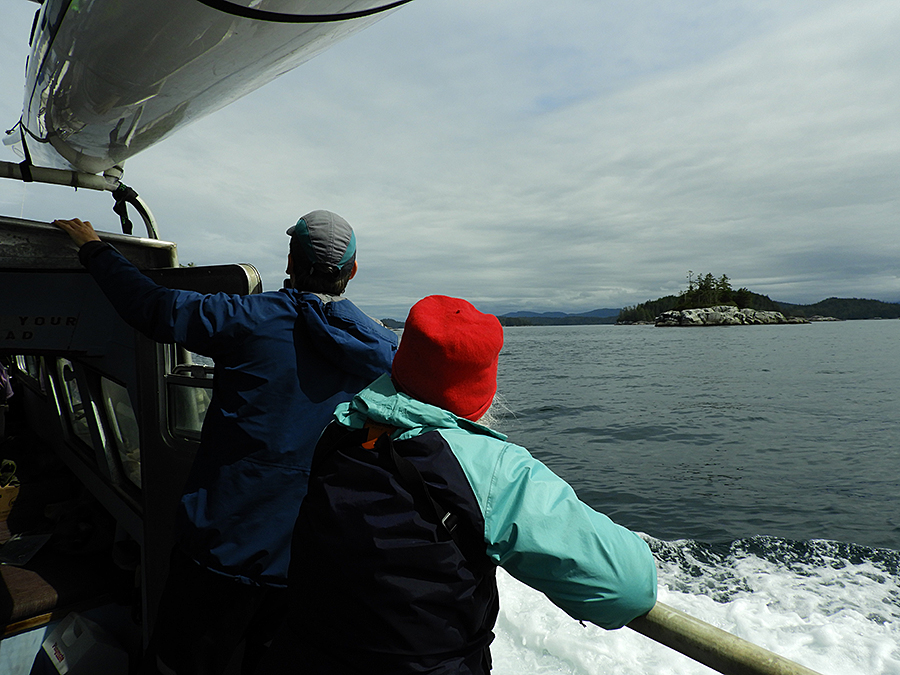
Traveling to the Broughton Archipelago – a 2.5 hour boat ride from Port McNeill.
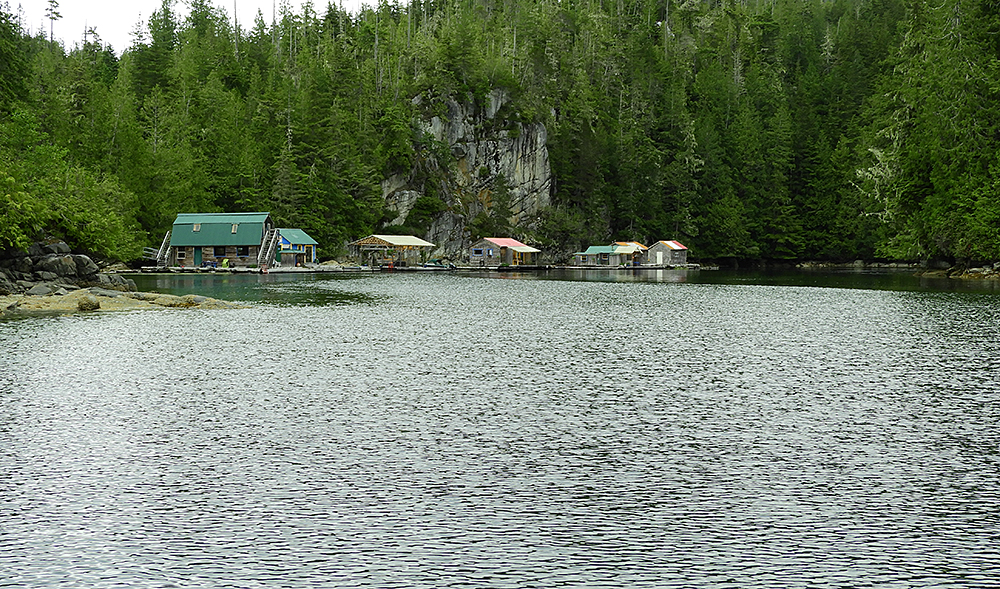
Paddlers Inn, located on Gilford Island in Little Simoon Sound.
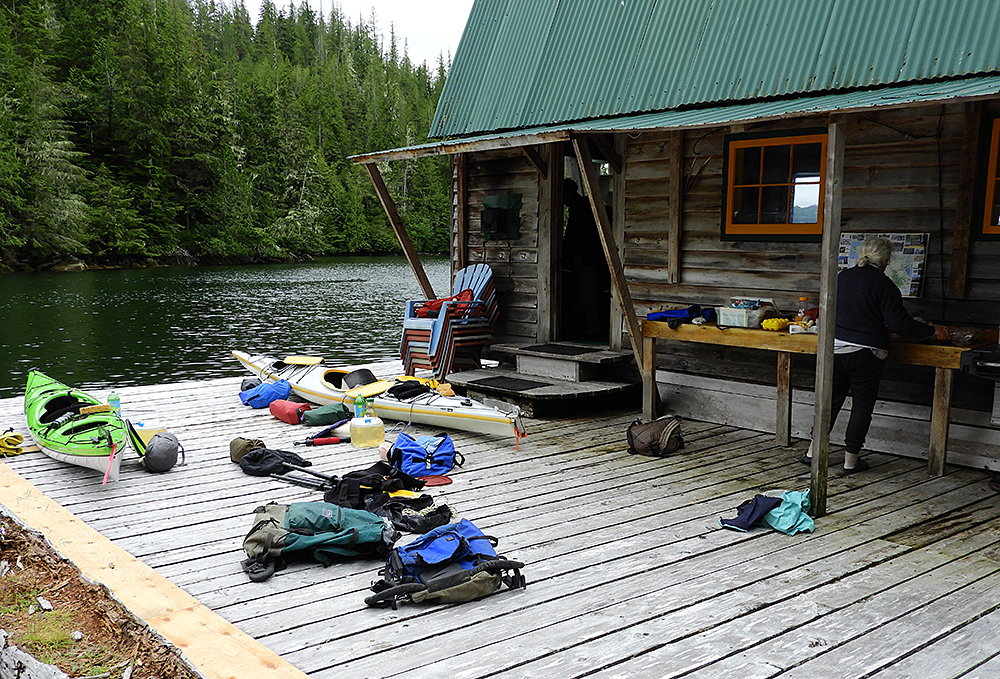
Sorting and packing for our camping trip on the Paddlers Inn dock.
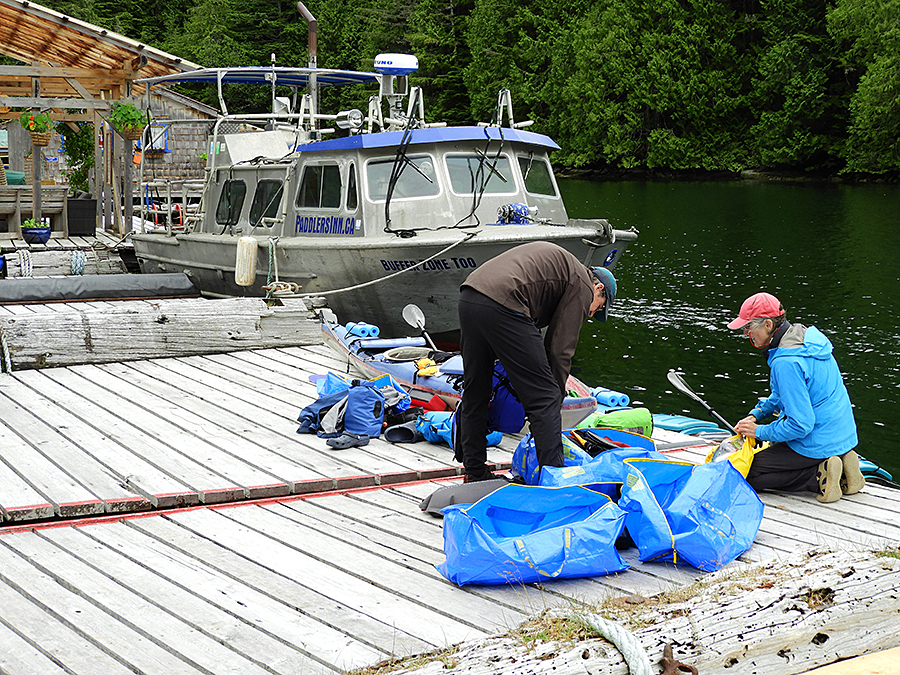
We left some of our gear and food at Paddlers Inn but needed lots of stuff for four nights of camping.
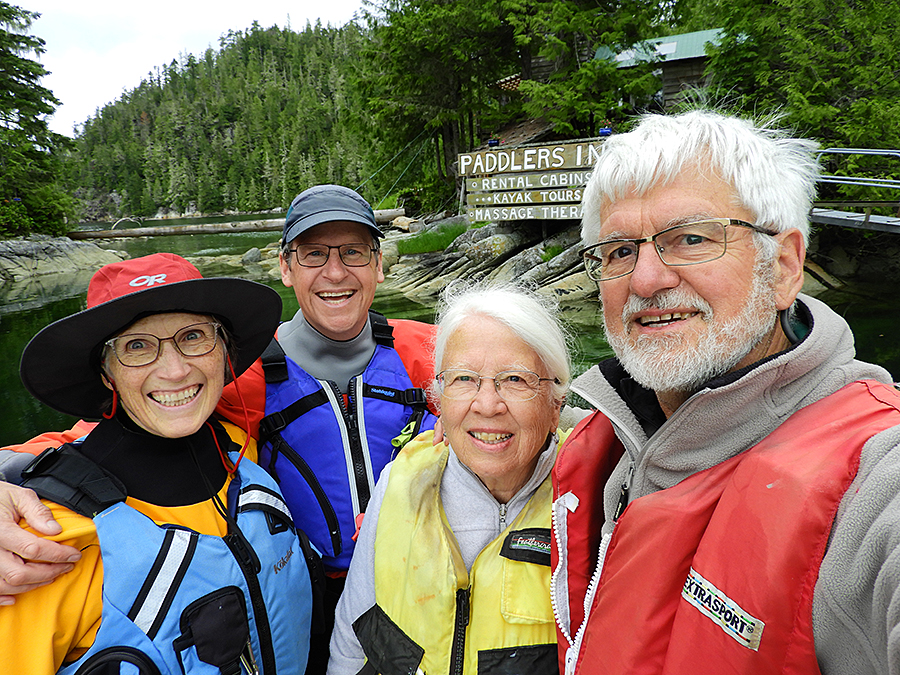
Heather, Roy, Andrea and Alan at the start of our adventure.
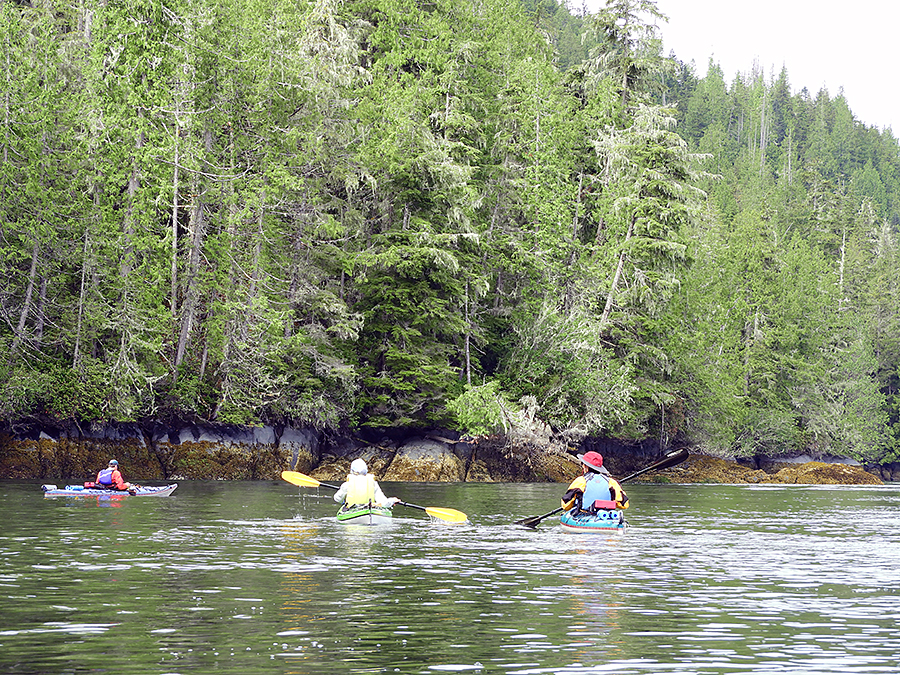
At last we are on the water and heading off.
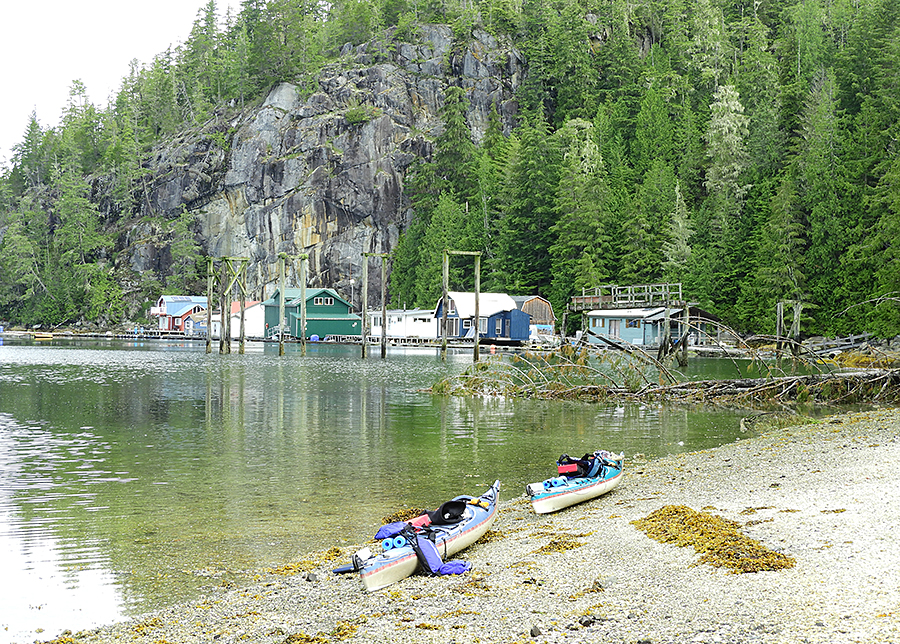
Our first night of camping was at Echo Bay Provincial Park – close to float houses and a lodge.
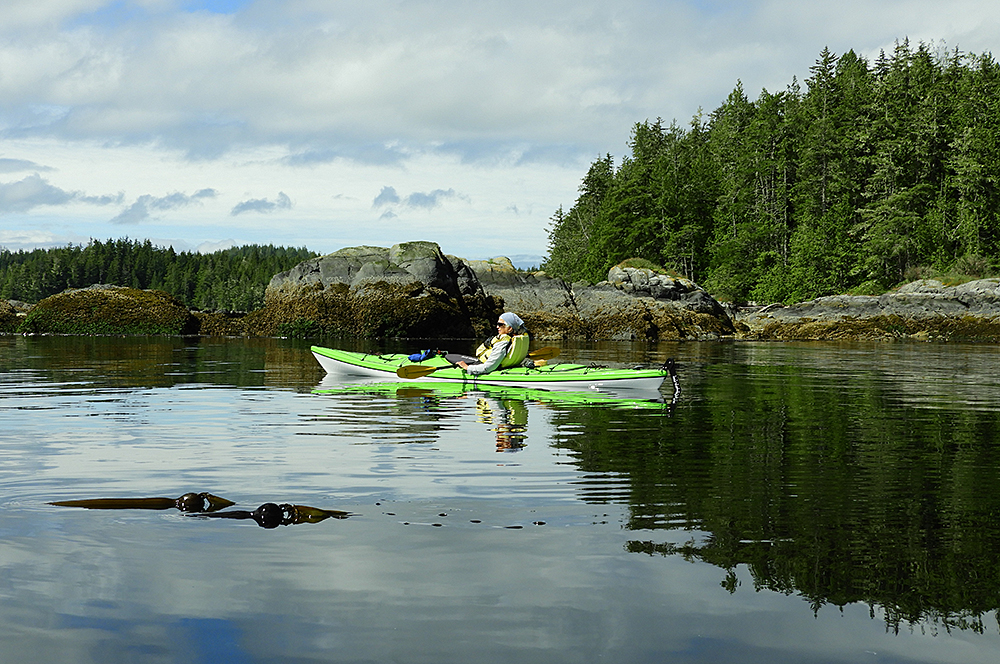
Day 2 began with a 10.4 km paddle to our next campsite on the Fox Islands. Andrea among the many small rocky islets.
Being at sea-level in a kayak and moving silently along gives excellent opportunities to enjoy wildlife.
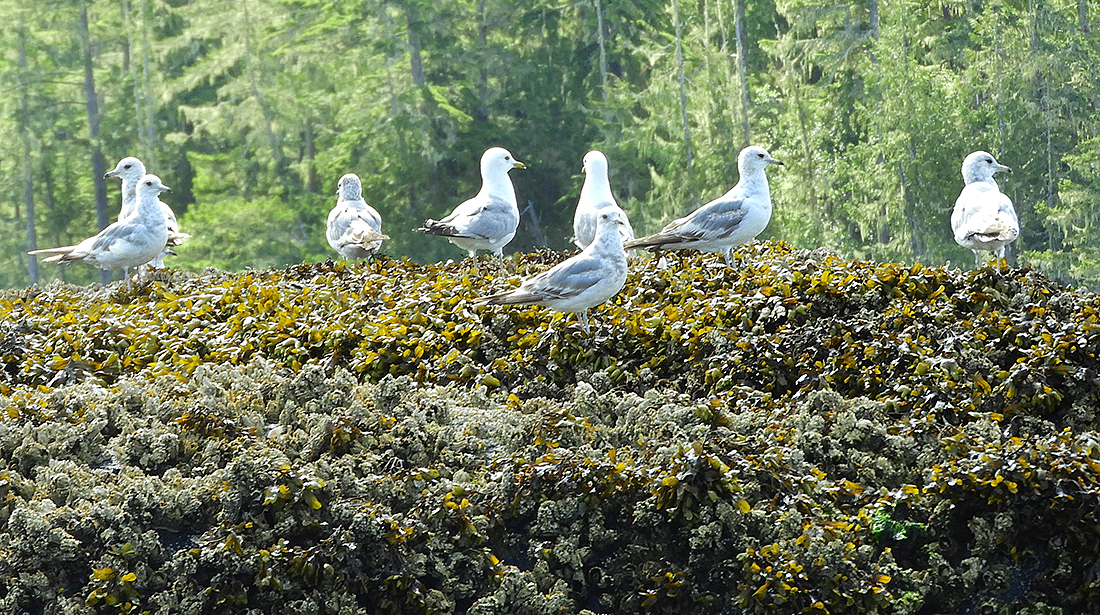
Short-billed Gulls were our constant companions. These are non-breeding immature birds.
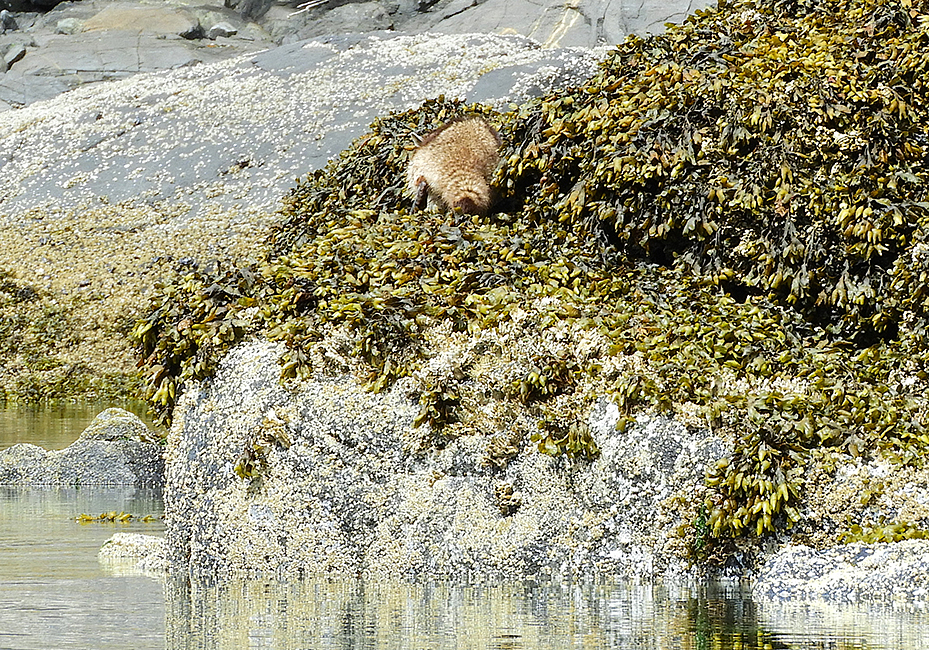
On a couple of occasions we passed a Raccoon foraging at low tide along the shoreline. But they scampered away before I could get a decent photo. We also saw several Mink but they were even more skittish and disappeared as we approached.
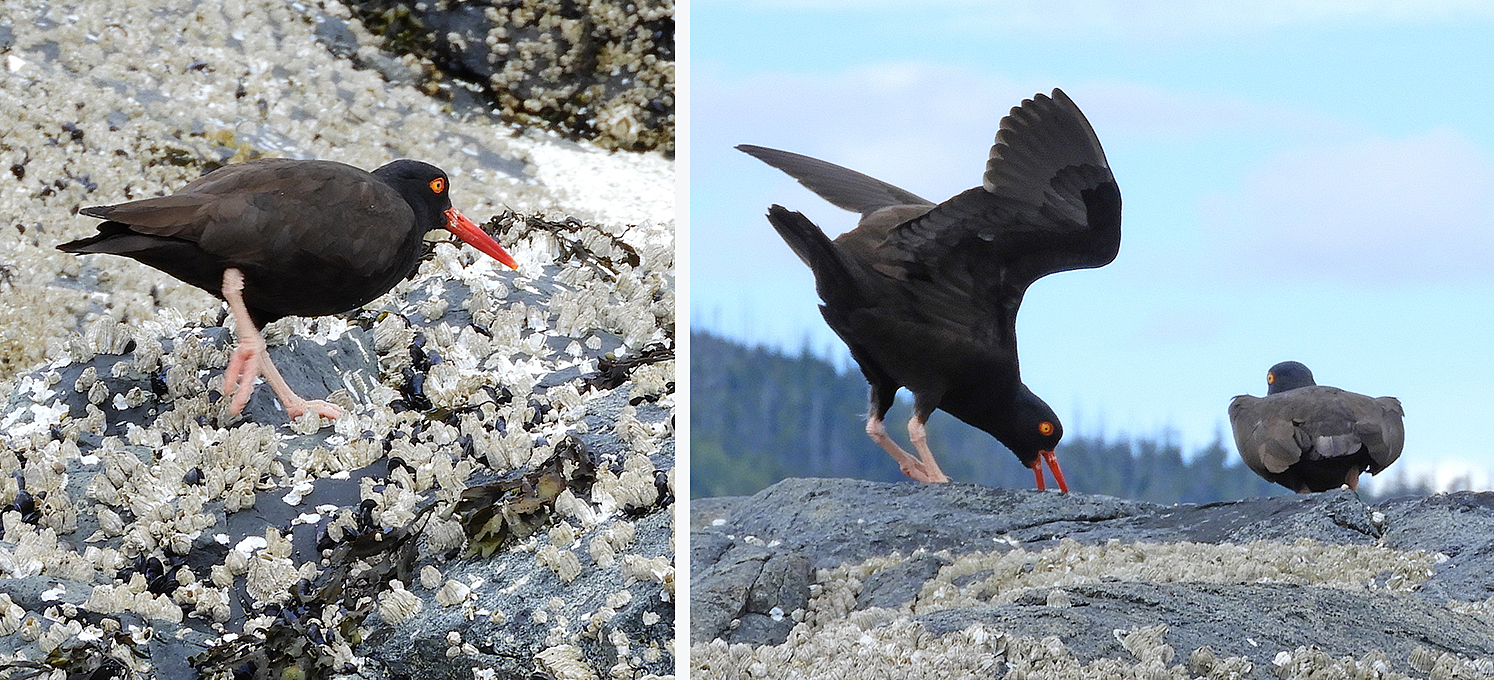
A few pairs of Black Oystercatchers appear to be breeding on the islands. Here we see a bit of display between a pair on their territory.
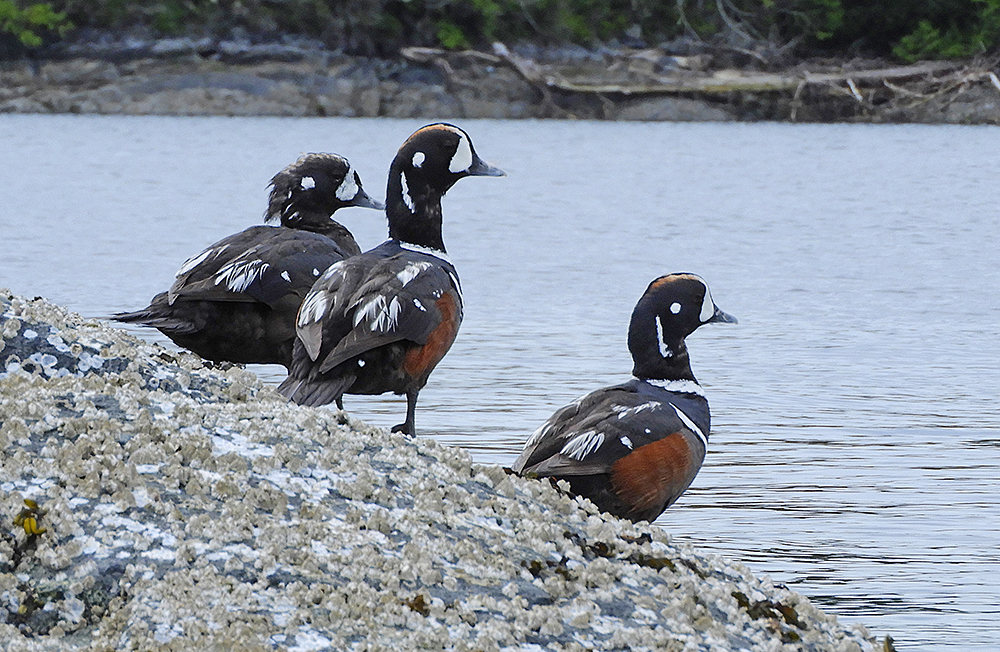
Dozens of Harlequin Ducks were in the Fox Islands. These are all males – the females are back on the breeding grounds far inland, looking after the year’s offspring. Once the eggs are laid the males leave their mates, head back to the coast and spend the rest of the summer hanging out with the boys and moulting. Notice how ragged their plumage looks – they are replacing all their feathers and are flightless for some of this process.
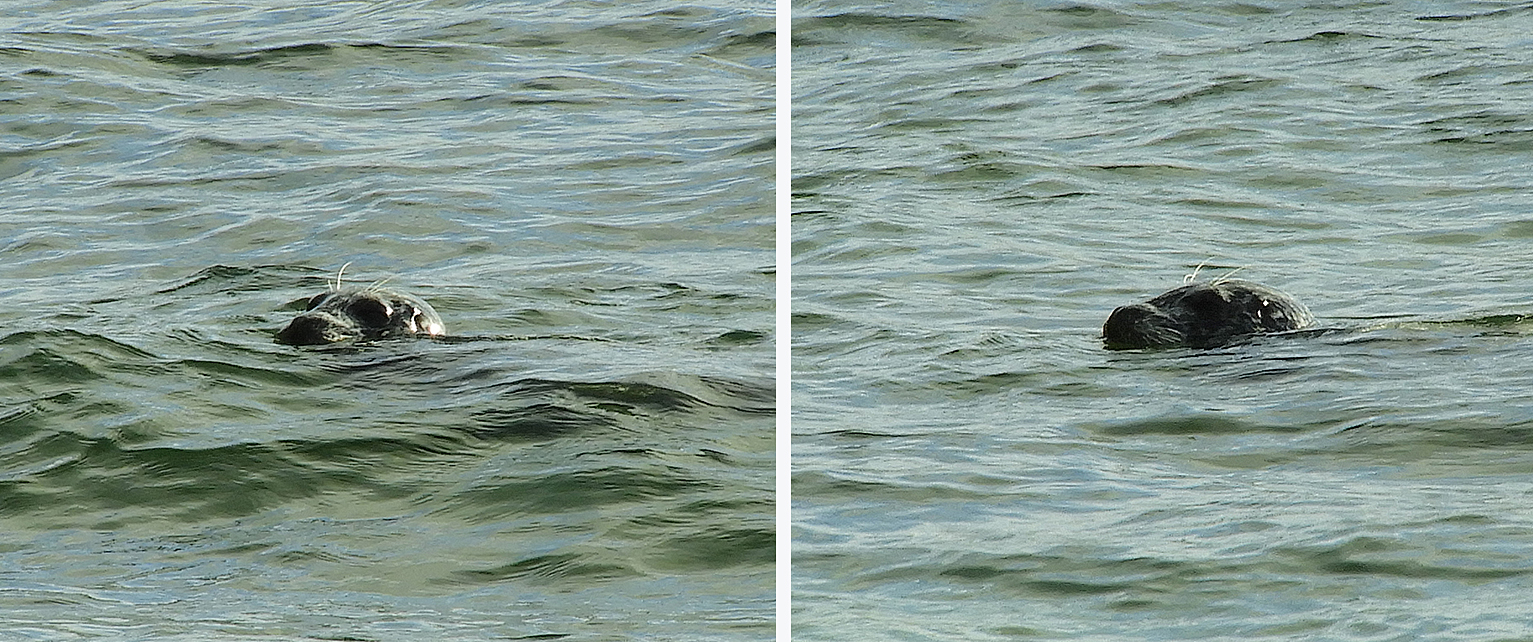
Harbour Seals are plentiful in this area. They are often curious and follow behind a kayak.
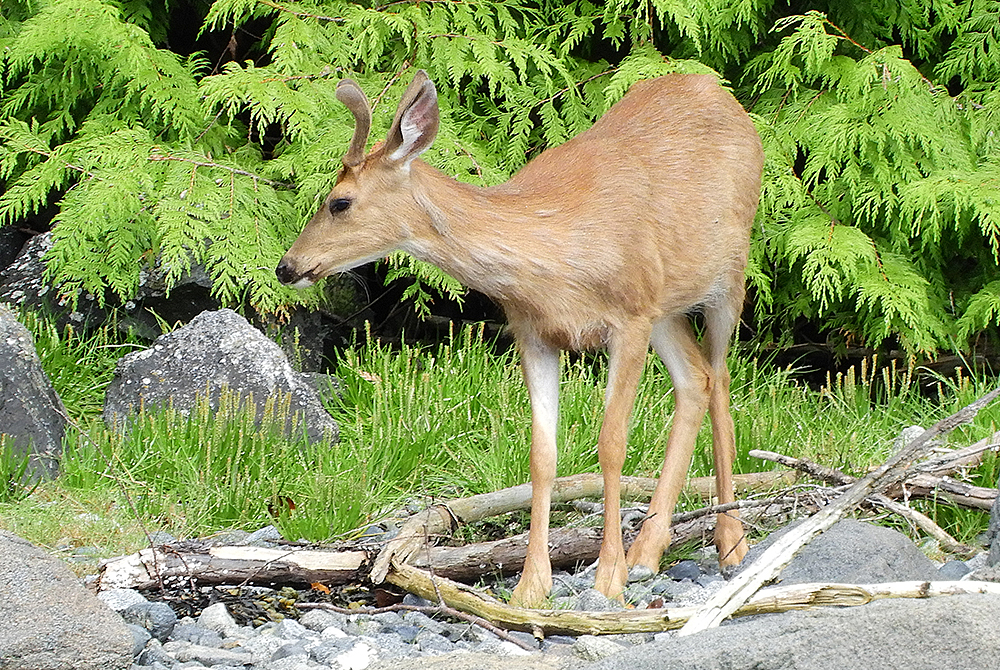
A male Columbian Black-tailed Deer on one of the Fox Islands. Deer are good swimmers and we later saw this individual swimming to a small islet to enjoy a feast of lush grass there.
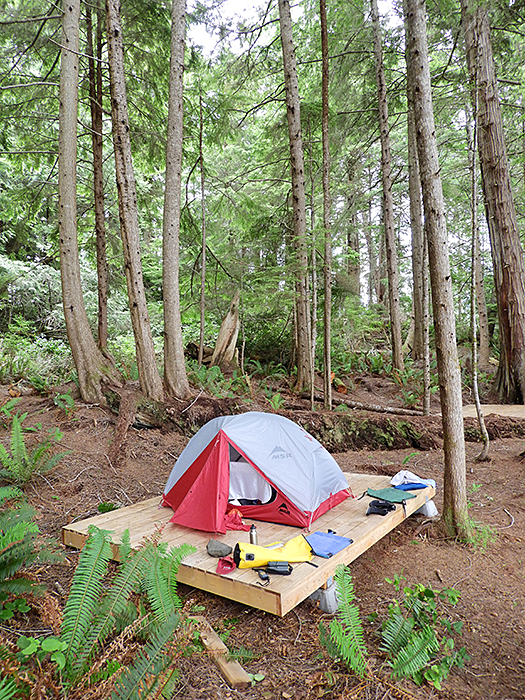
Our tent for three nights at the Fox Islands campsite.
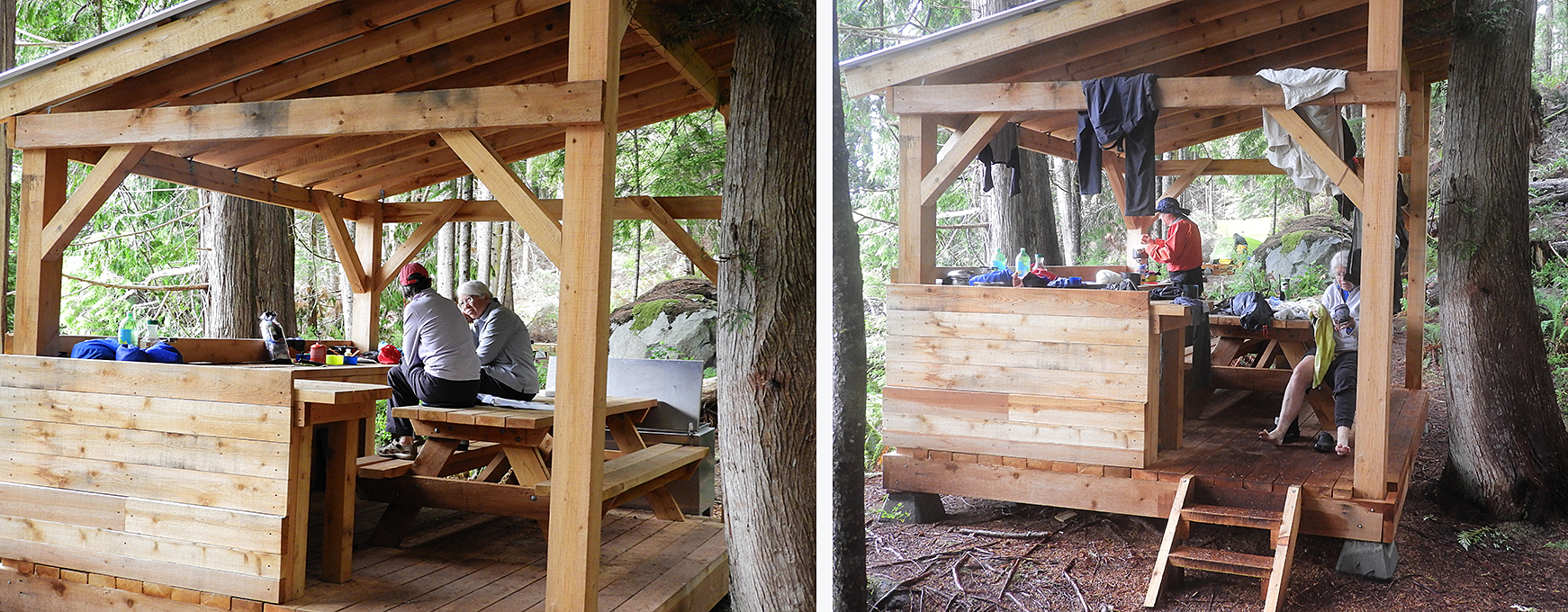
Our campsite in the Fox Islands offered a cooking shelter. This was a very welcome feature as the rain set in. We stayed three nights at this site and luckily no-one else was using the shelter as we spread out our wet gear.
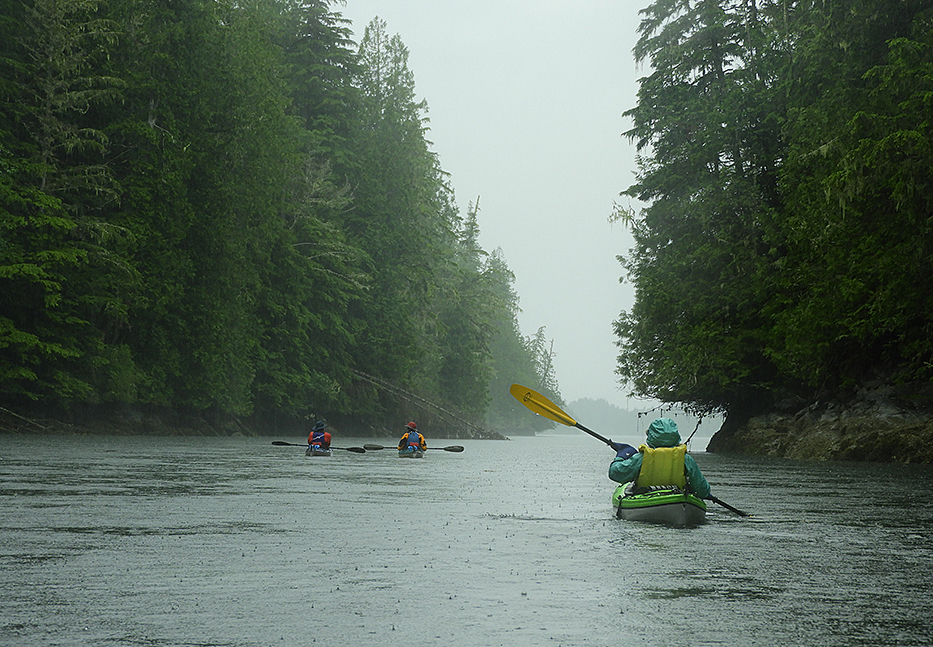
Day 3 was rainy through most of the day. But the sea was calm and we explored some of the more exposed islands – the Coach and Marsden groups, Hudson Island and nearby islets. Here we are transiting the narrow passage between Tracey and Mars islands.
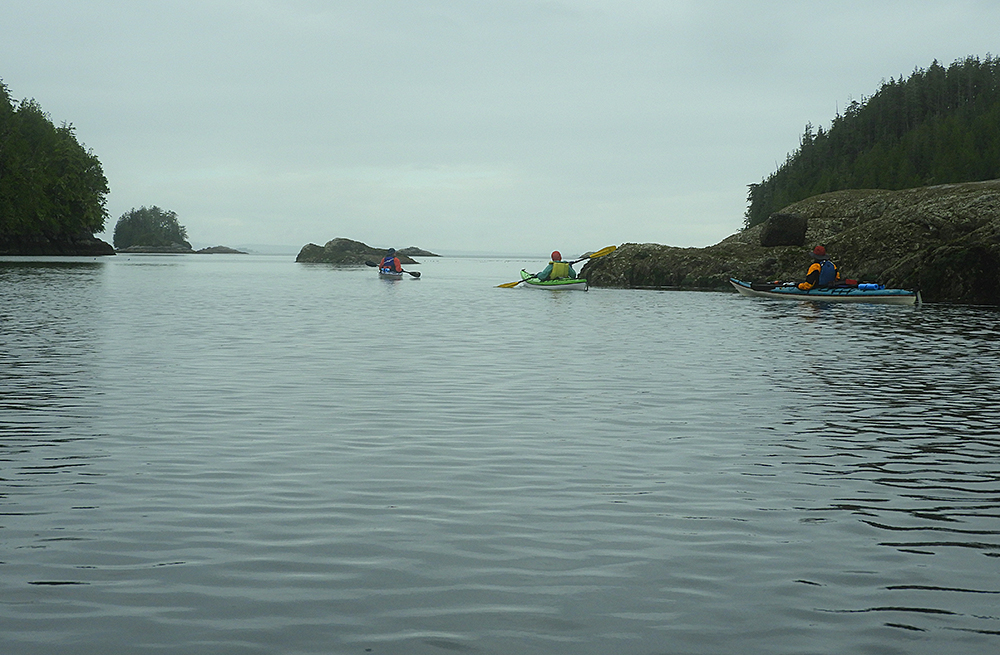
Paddling among the Coach Islets with the open Queen Charlotte Strait beyond.
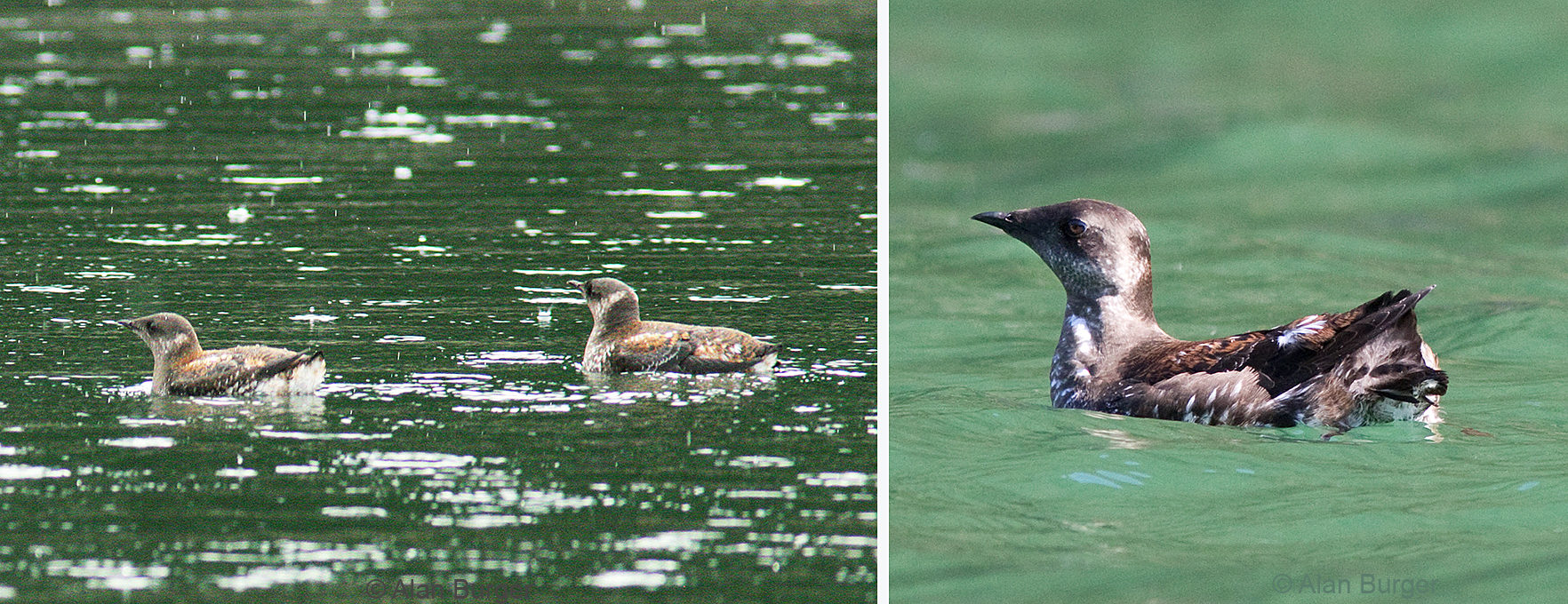
Throughout the Broughton Archipelago, especially around the outer islands, we saw numerous Marbled Murrelets – over 150 on a 20 km paddle to the outer Coach and Marsden islands on 29 July 2024. [These photos were taken elsewhere – I didn’t have the right camera gear to photograph murrelets on our Broughton trip]. Photos: ©Alan Burger
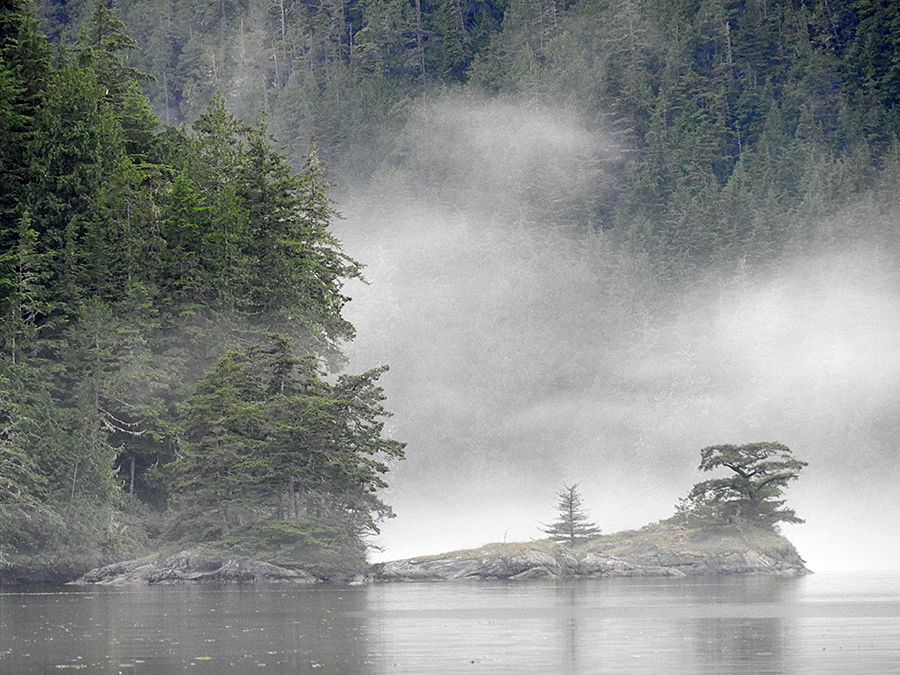
By the end of the day the rain eased somewhat and we were happy to be back in our campsite shelter making hot dinners.
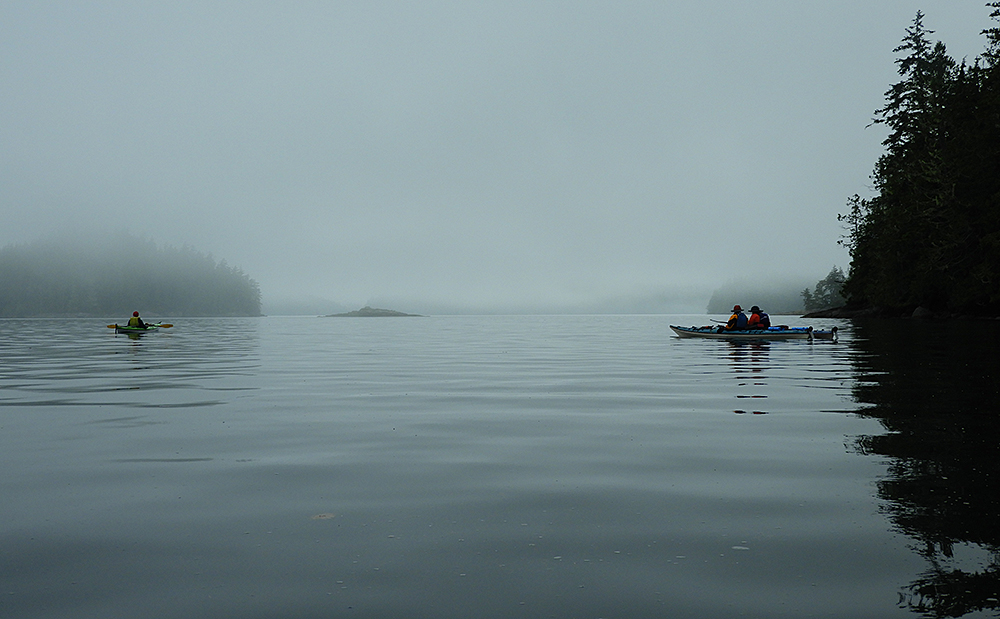
Day 4 started off foggy but once the mist lifted we had good conditions for the day. We headed north to explore Blunden Passage, Innis Island and around Insect Island.
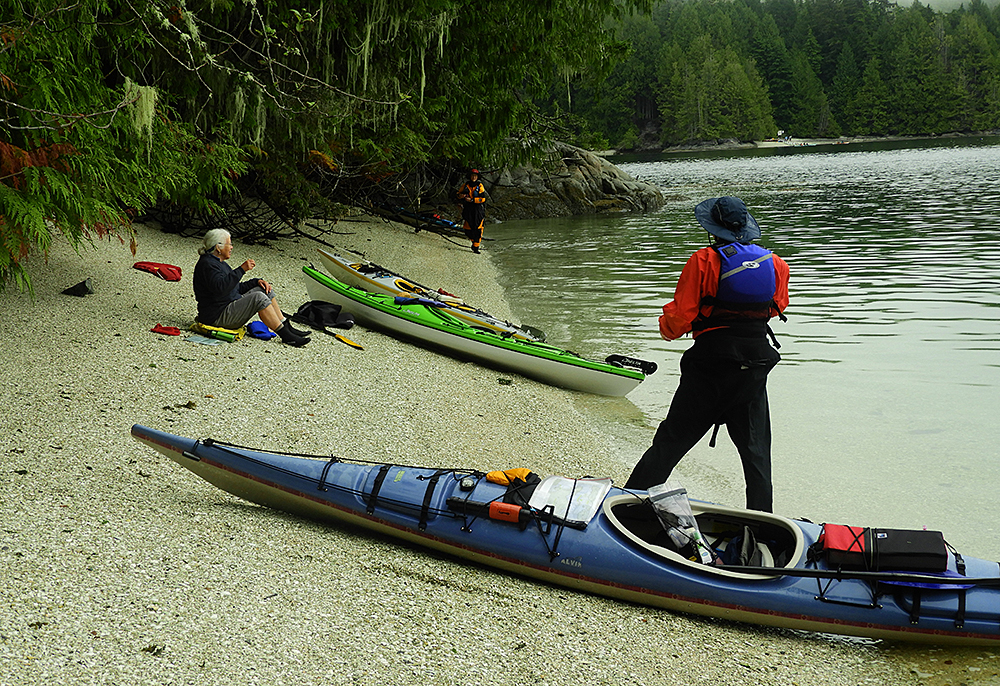
A lunch break on Eden Island. The beaches are not sand but are ancient clam middens. There are few of them and we were often on the lookout for somewhere to land for a break. Across the channel is the campsite at Insect Island, with a group of kayakers.
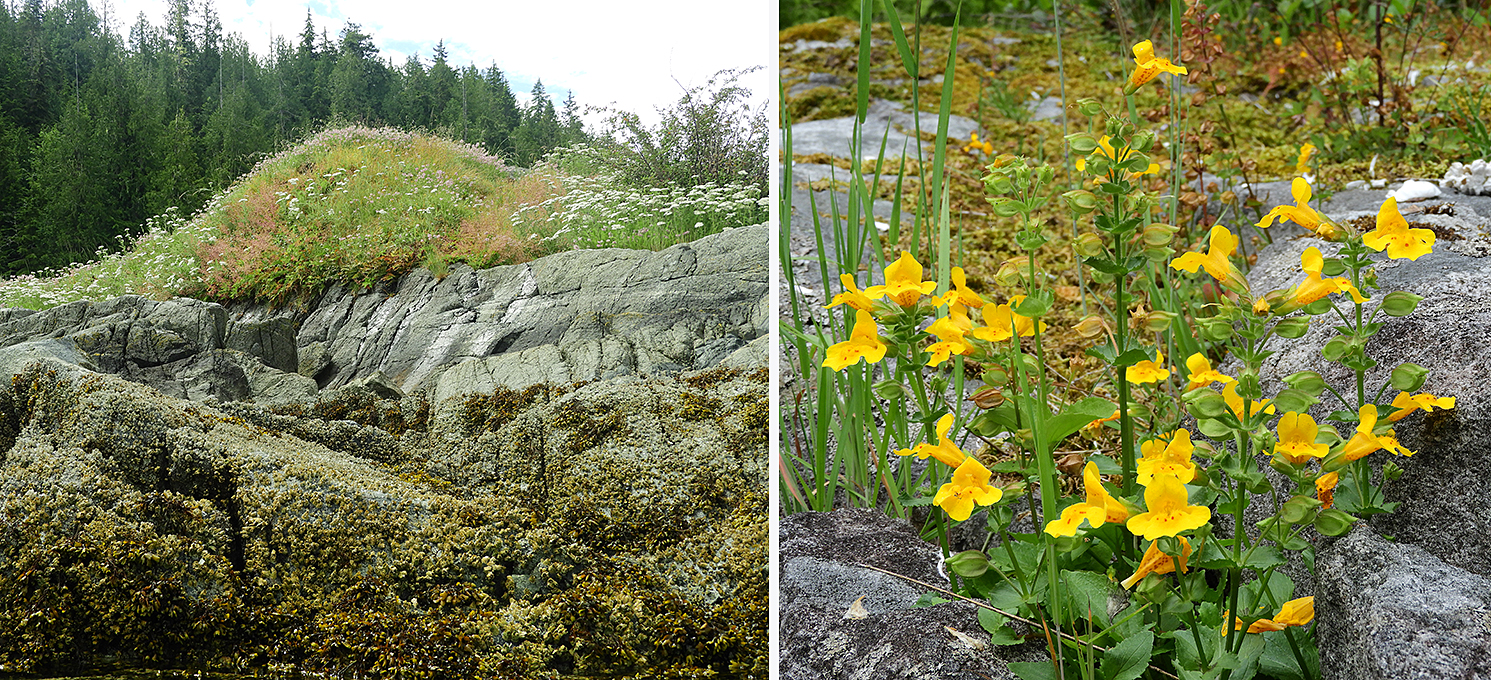
Many of the little rocky islets have lovely wildflower patches. The plant on the right is a Yellow Monkey-flower (Mimulus [Erythranthe] guttatus).
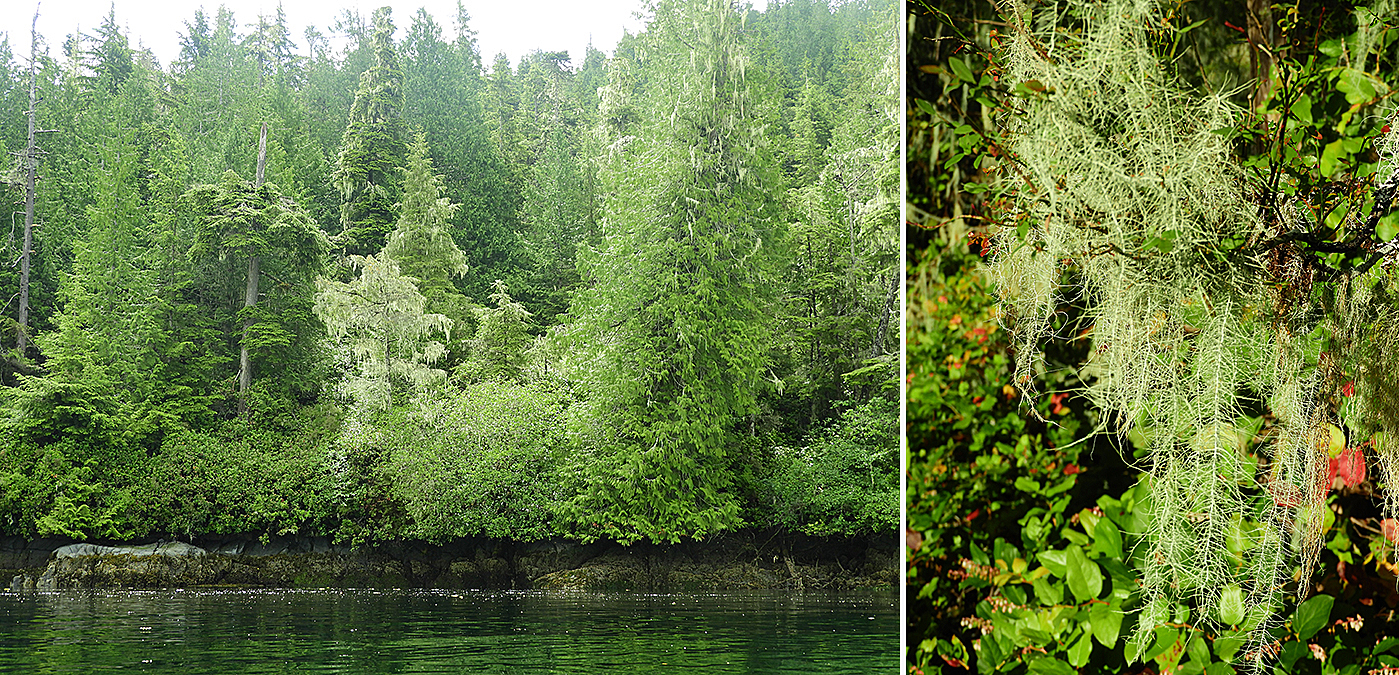
High rainfall and frequent mist promote lush lichens on the forest trees. The one on the right is Methuselah’s Beard Lichen (Usnea longissima).
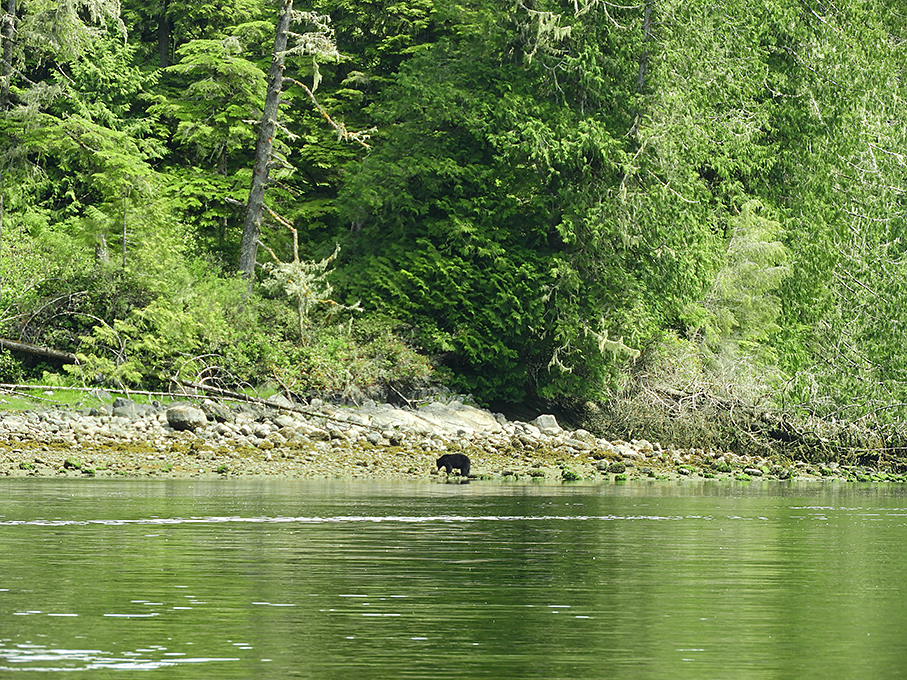
As we paddled into an inlet on Baker Island we spotted a Black Bear on the shoreline.
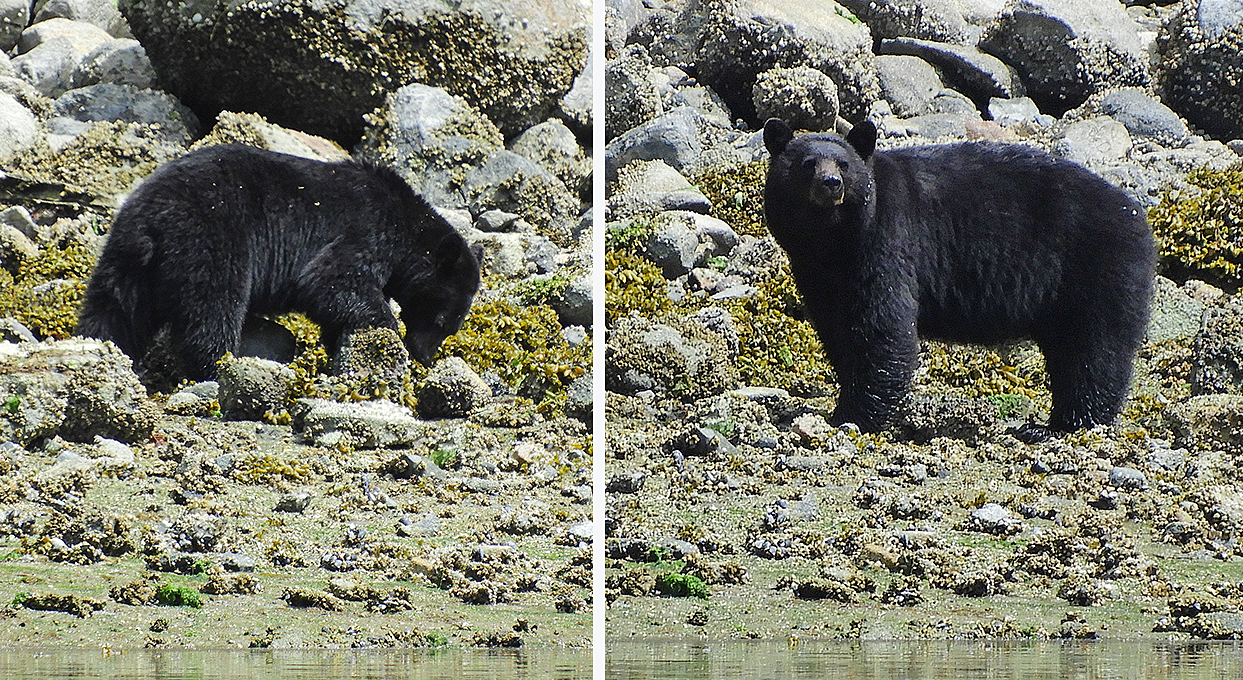
We drifted quietly closer and watched as she rolled over boulders to get at crabs and other intertidal critters hiding beneath.
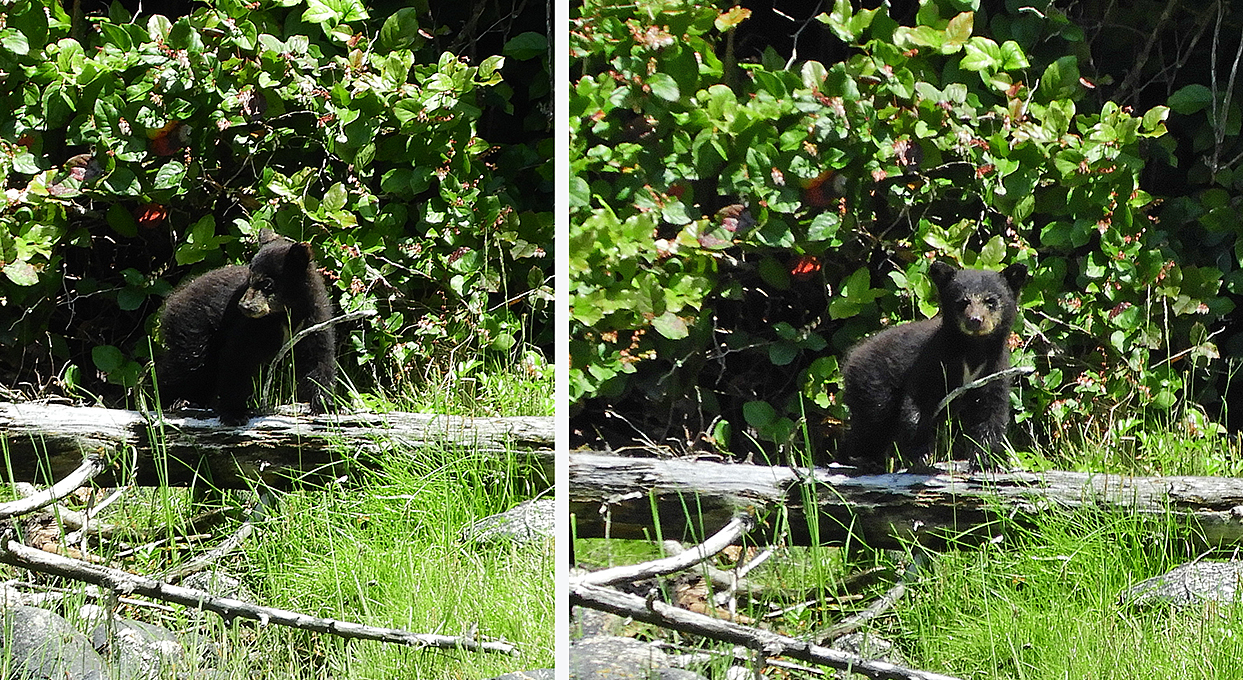
And at the forest edge we saw two tiny cubs. We moved away to let the bear family continue their activities in peace.
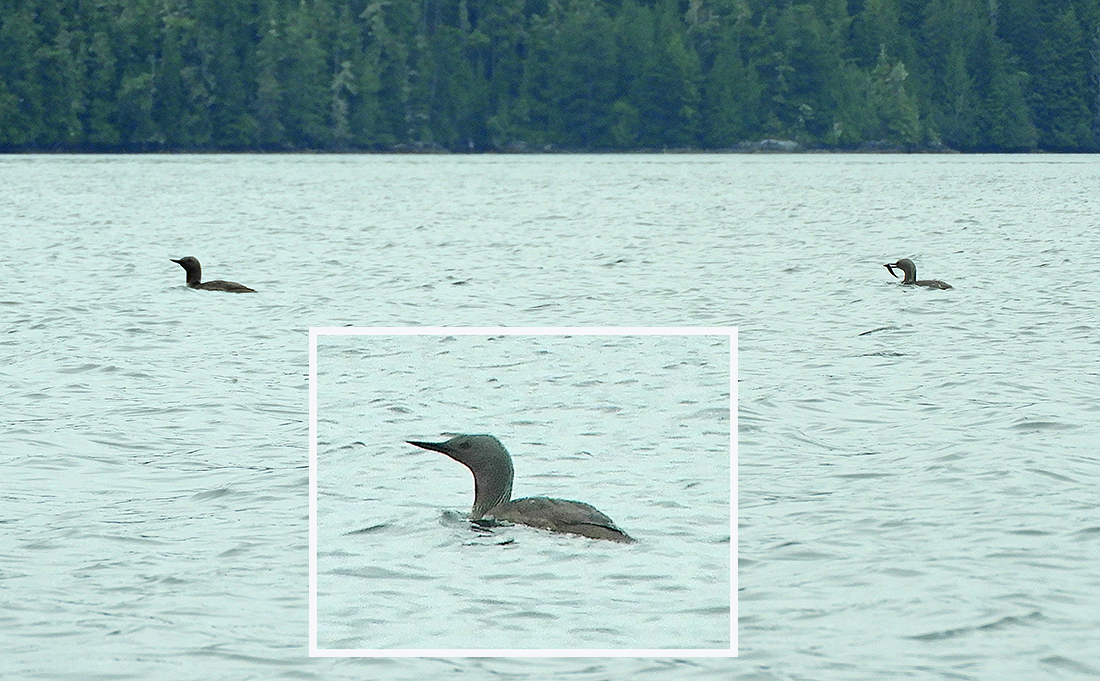
We were surprised to have several encounters with Red-throated Loons. This is a fairly rare species in southern B.C. but we saw them at four locations. Notice that the loon on the right is carrying a fish. Moments later these two took off and headed inland towards a nearby lake where they likely were feeding one or two chicks.
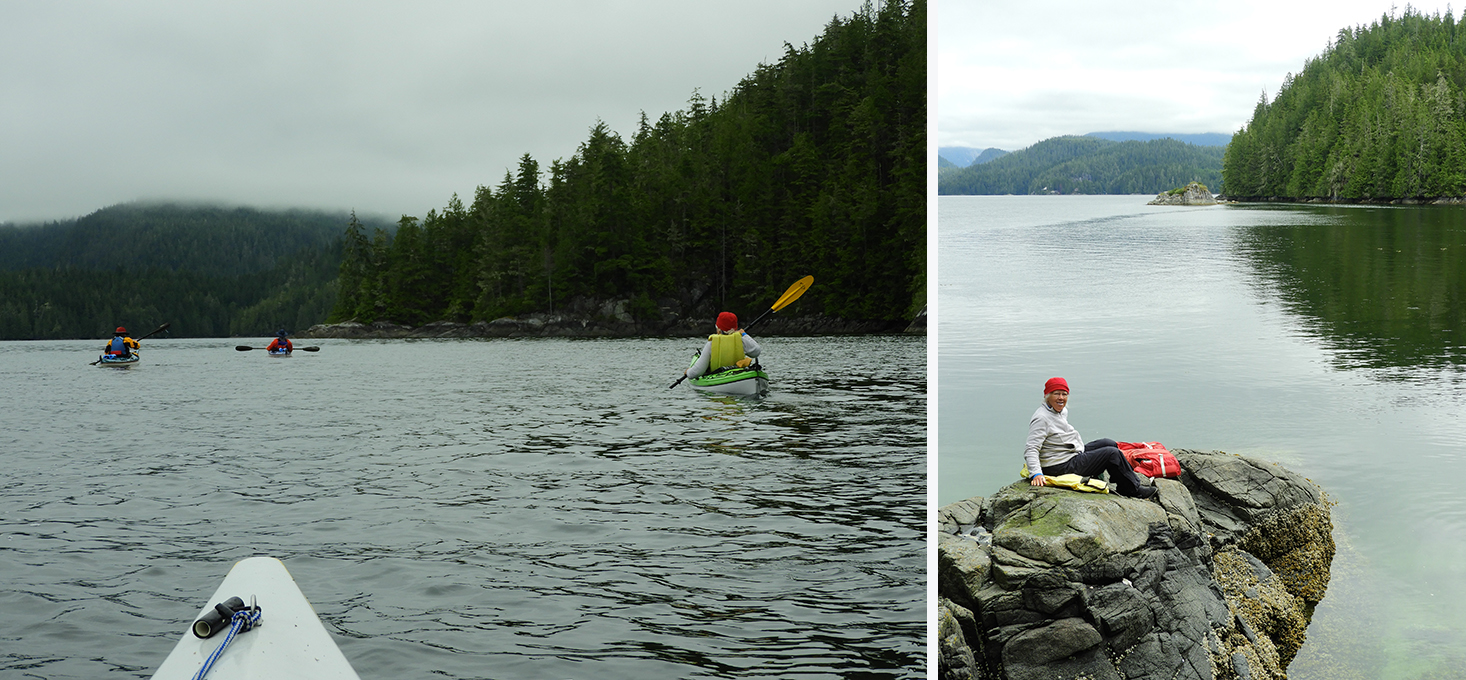
Day five – we headed back to Paddlers Inn, with many detours to explore inlets and islets.
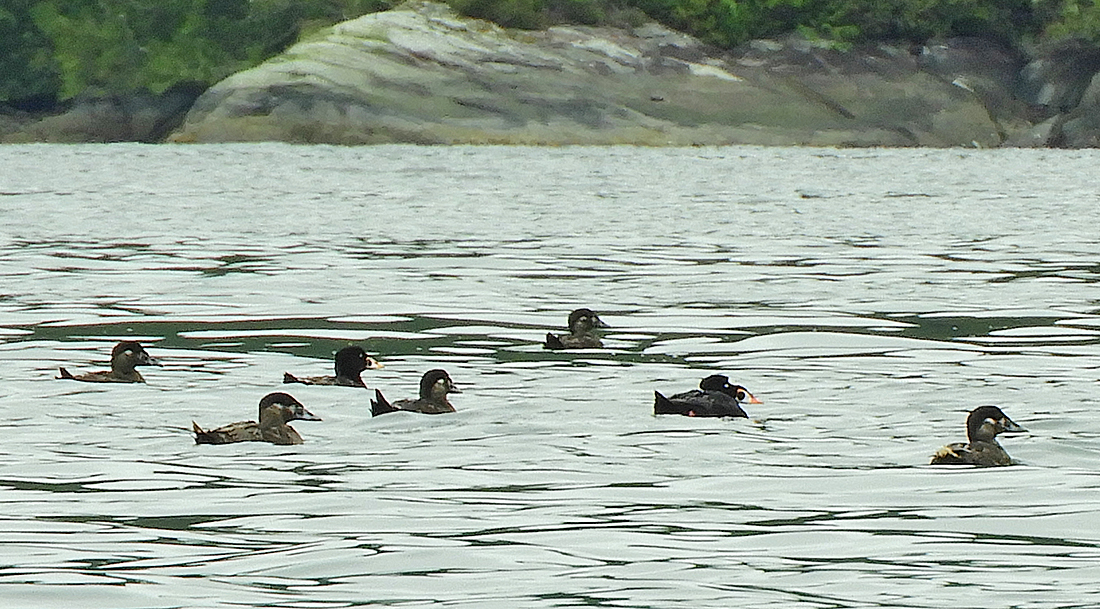
Part of a big flock of Surf Scoters – all look like immatures. The adults are hundreds of km away, breeding on lakes and rivers as far off as the Yukon.
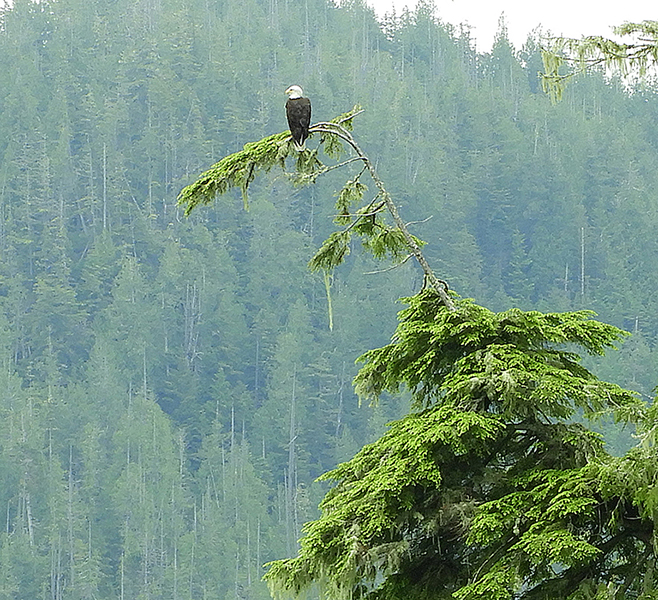
One of the many Bald Eagles we saw. One nest had two almost full-grown chicks.
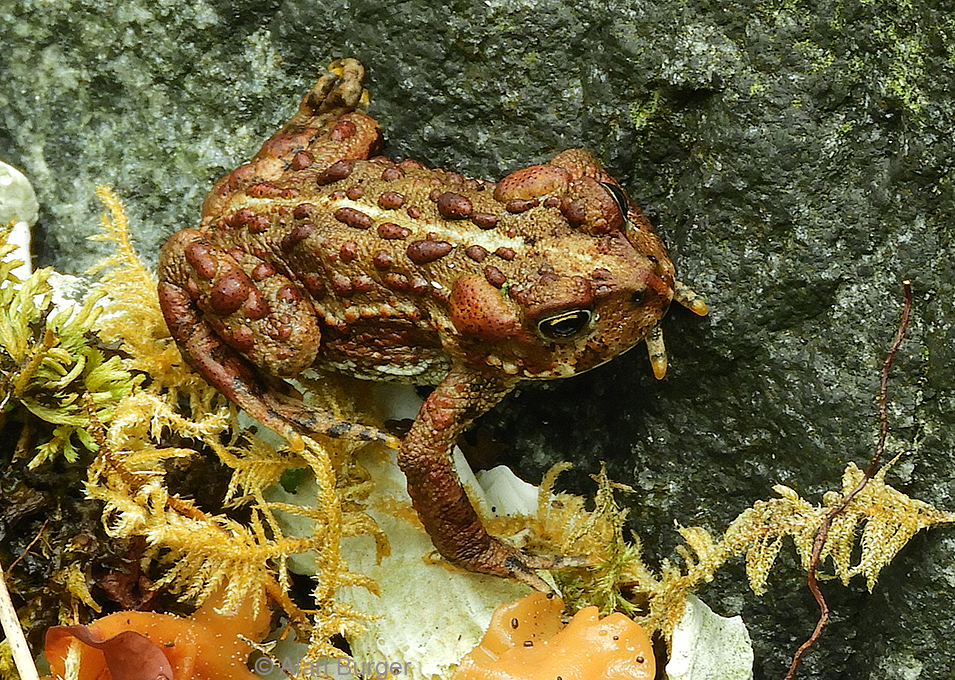
We were amazed to find this small Western Toad on a small islet where we stopped for lunch. We saw several toads on the big Gilford Island but this little guy somehow got across 20 m of salt water to reach this islet.
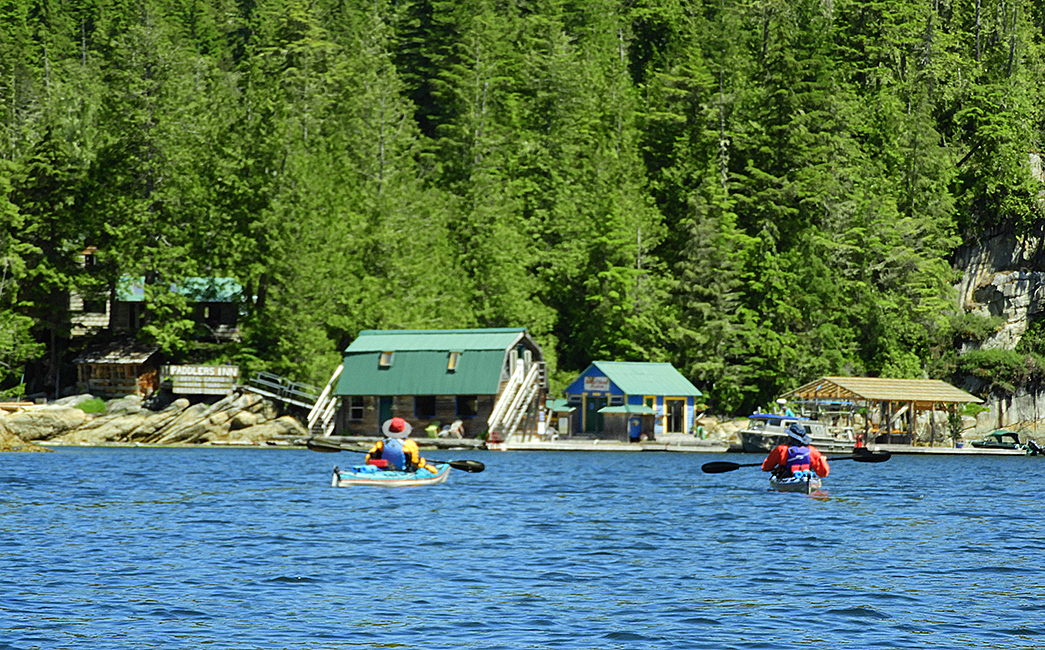
Returning to Paddlers Inn.
Our last two nights were in the comparative luxury of Paddlers Inn. We had a cabin up on a knoll overlooking the ocean. Hot showers, comfy beds, clean clothes, a fridge and stove – wonderful!
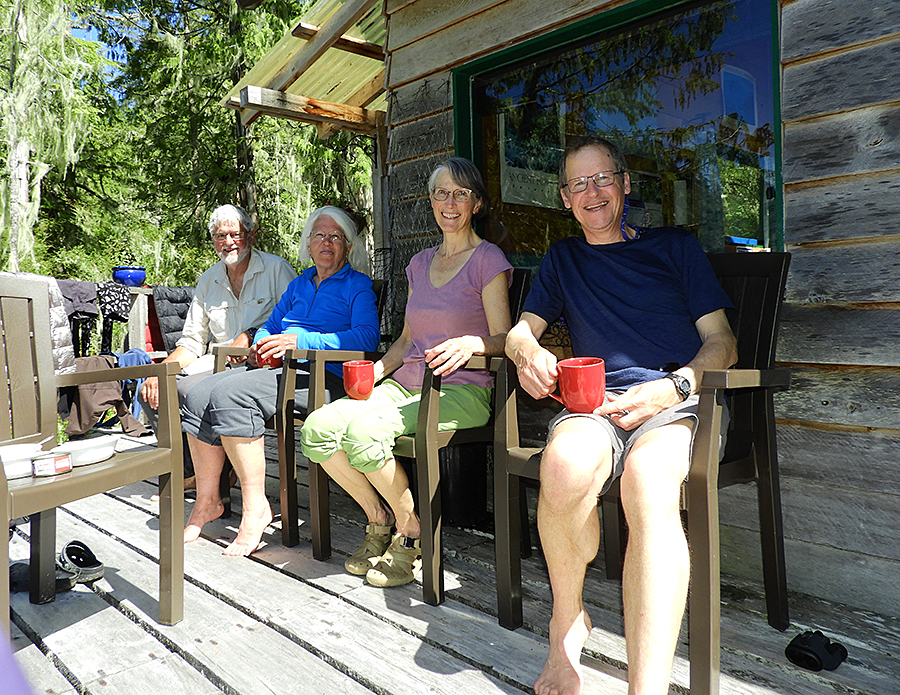
Enjoying a cuppa on the deck of our cabin – Alan, Andrea, Heather & Roy.
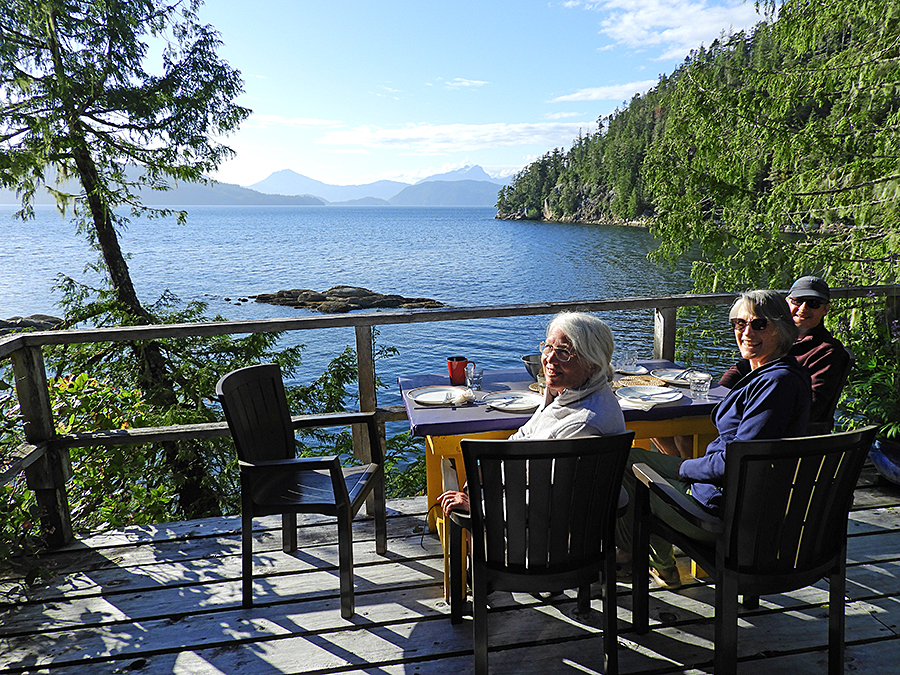
Dinner with a view! And the sounds of Humpback Whales and Marbled Murrelets in the ocean below.
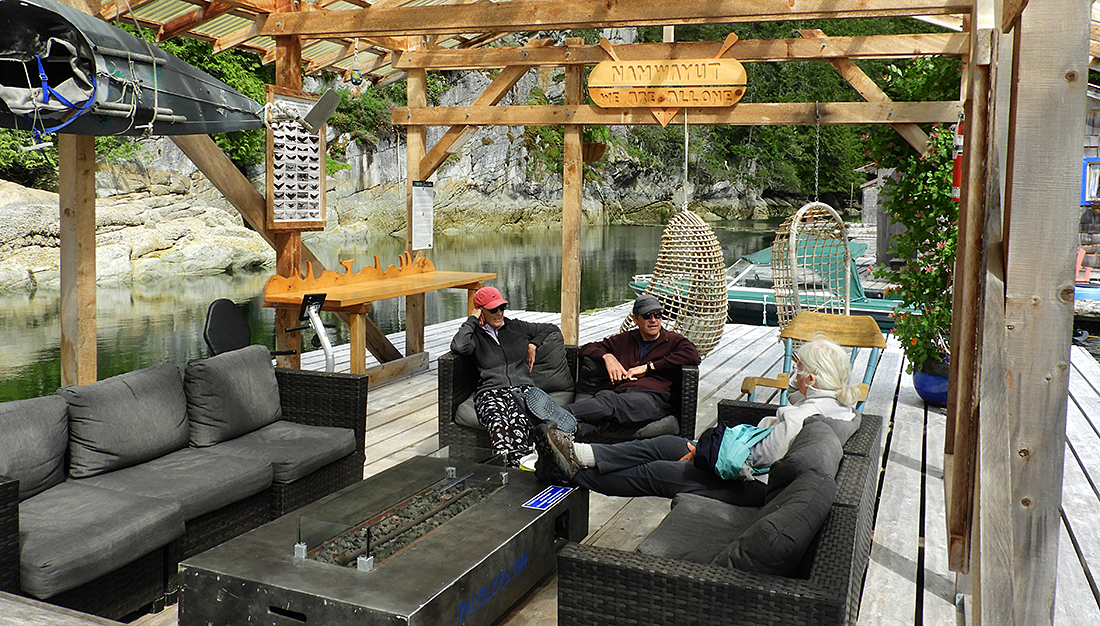
Relaxing at the covered dockside lounge at Paddlers Inn.
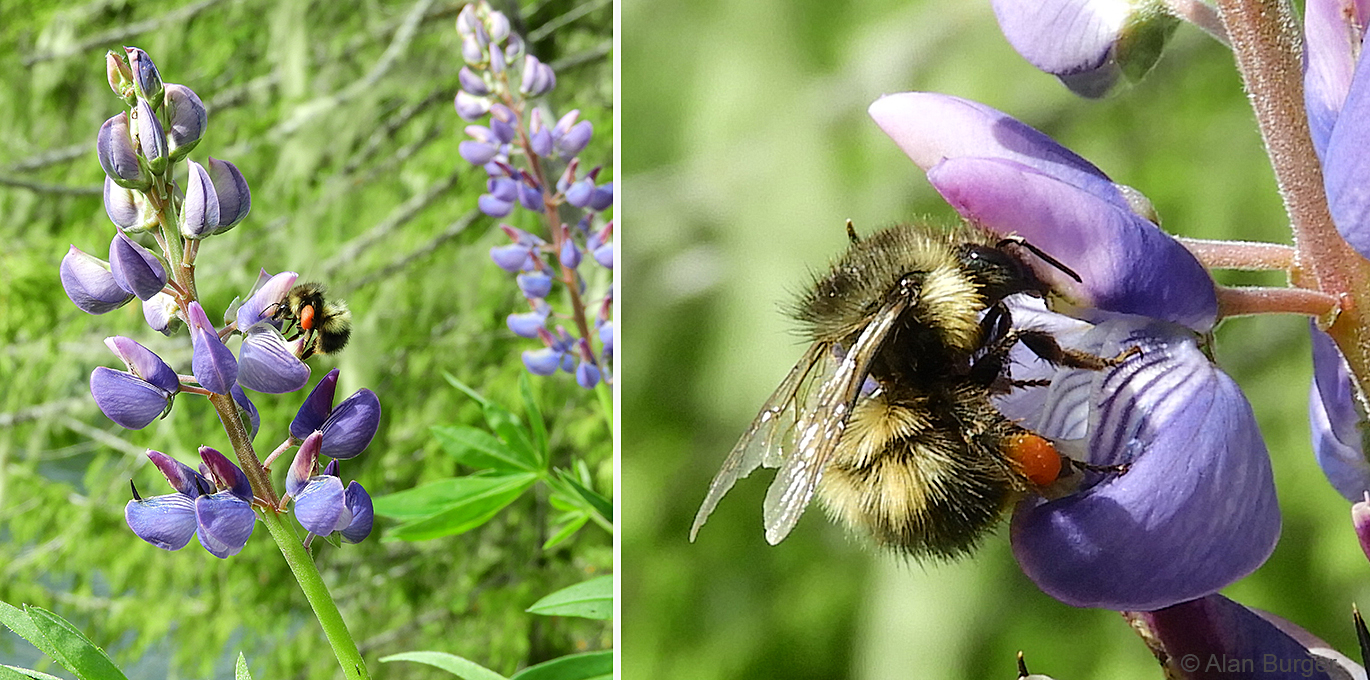
The lupin flowers on our cabin deck attracted many bumblebees – we later identified them as Sitka Bumblebees (Bombus sitkensis). Note the orange pollen sacs on the bee’s hind legs.
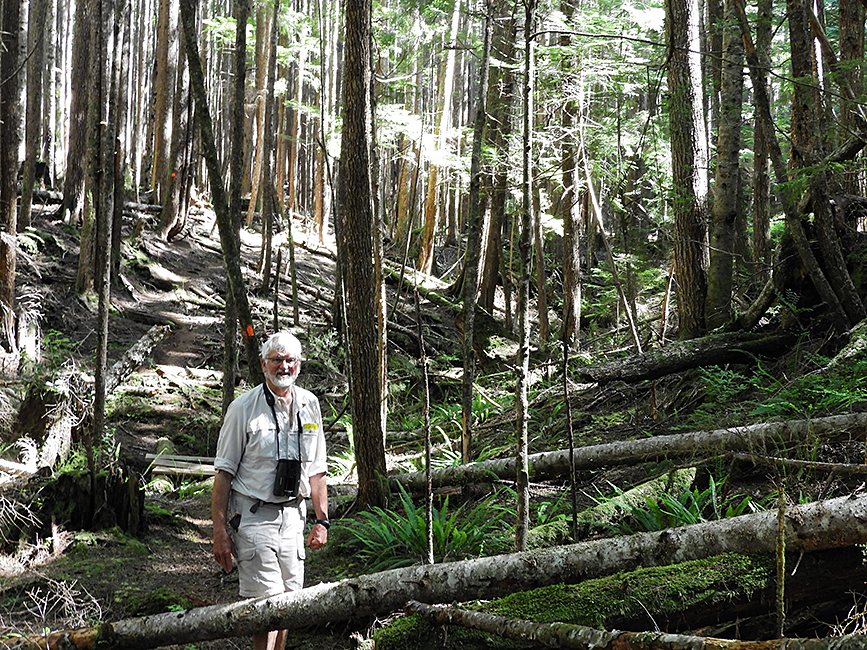
There is an interesting hike of about one km through the forest from Paddlers Inn to a beautiful lake.
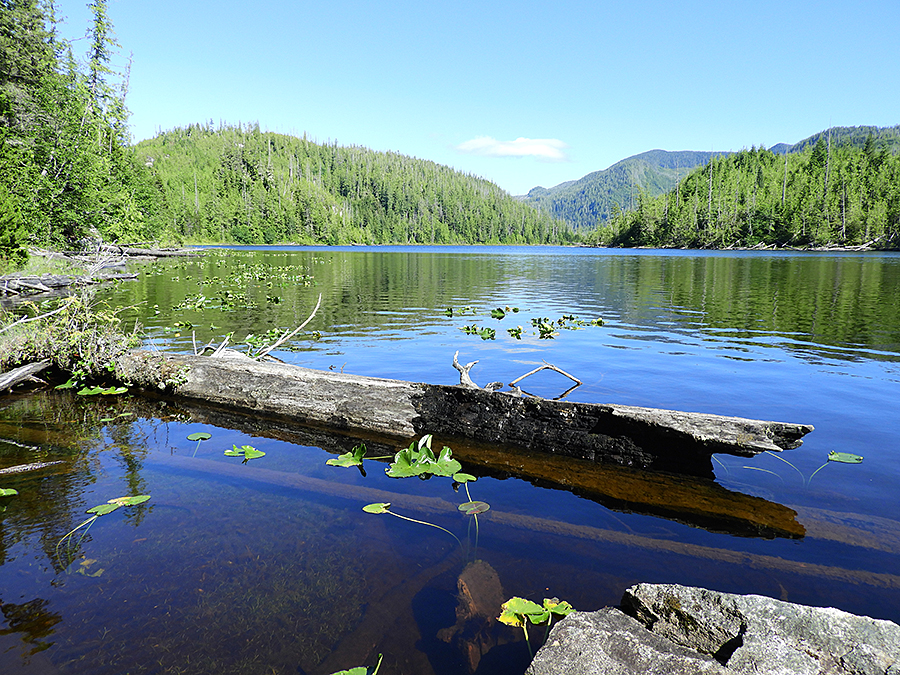
The lake in the hills above Paddlers Inn.
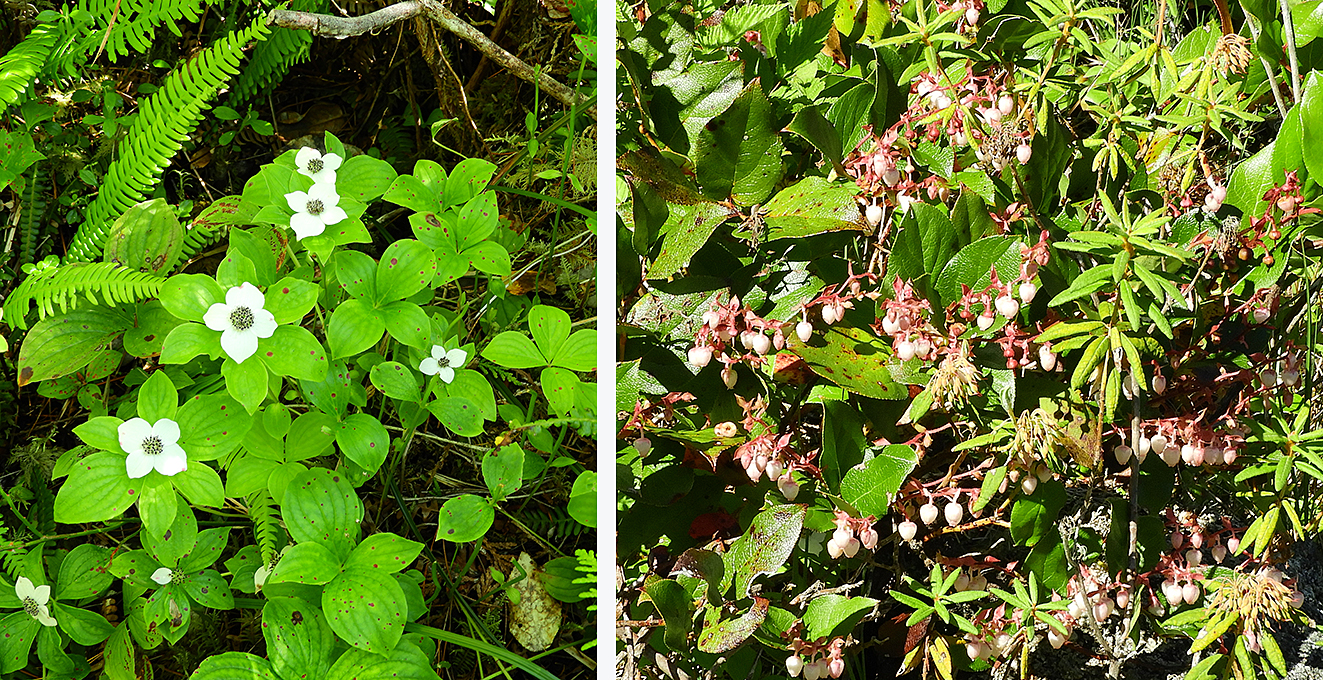
Lakeside flowers – Bunchberry (Cornus canadensis) with Deer Fern (Blechnum spicant) on the left and Salal (Gaultheria shallon) with a few Labrador Tea (Ledum groenlandicum) on the right.
Our final day of kayaking was a leisurely paddle from Paddlers Inn north along the coast of Gilford Island to Evangeline Point, exploring the many little inlets of Scott Cove.
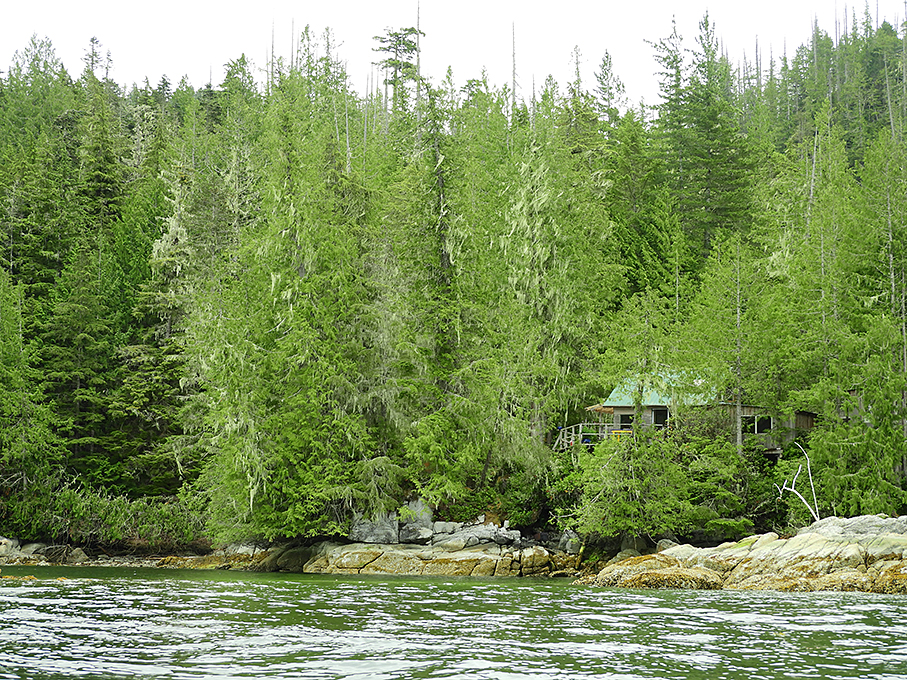
Kayaker’s view of our cabin at Paddlers Inn.
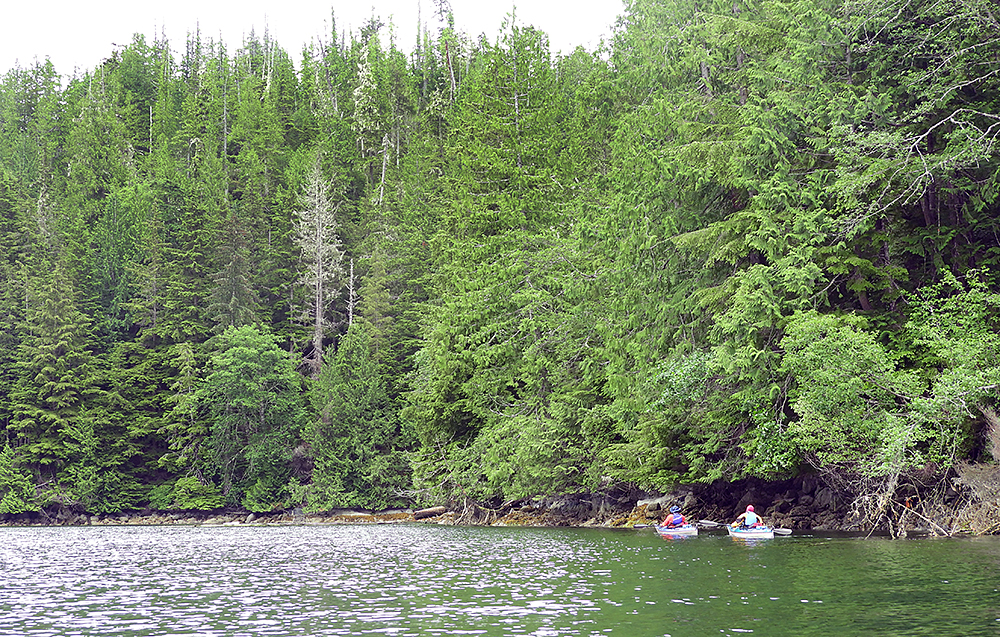
Roy and Heather paddling along the heavily forested shore of Gilford Island.
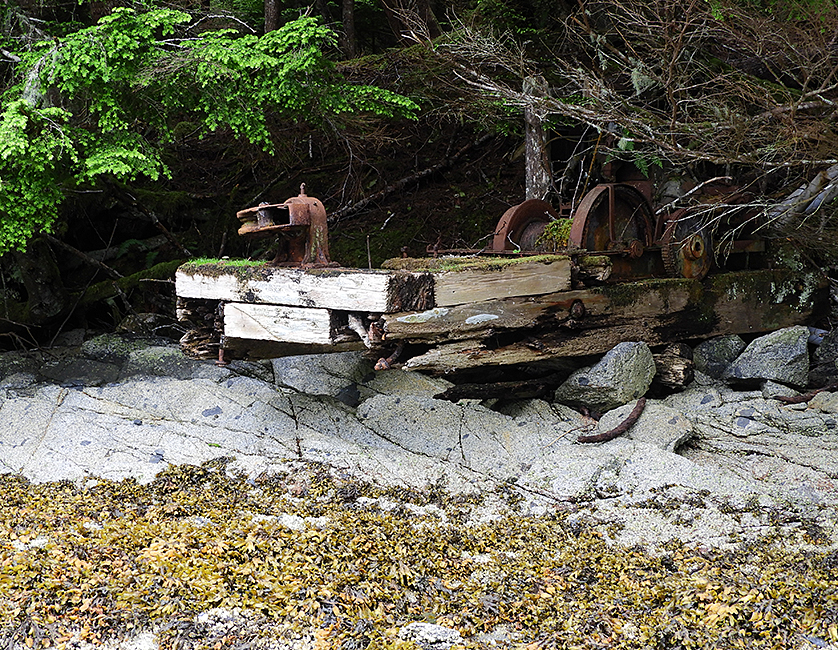
The Broughton Archipelago has experienced a long history of logging, continuing today. At many places along the shore we came across old equipment, like this winch.
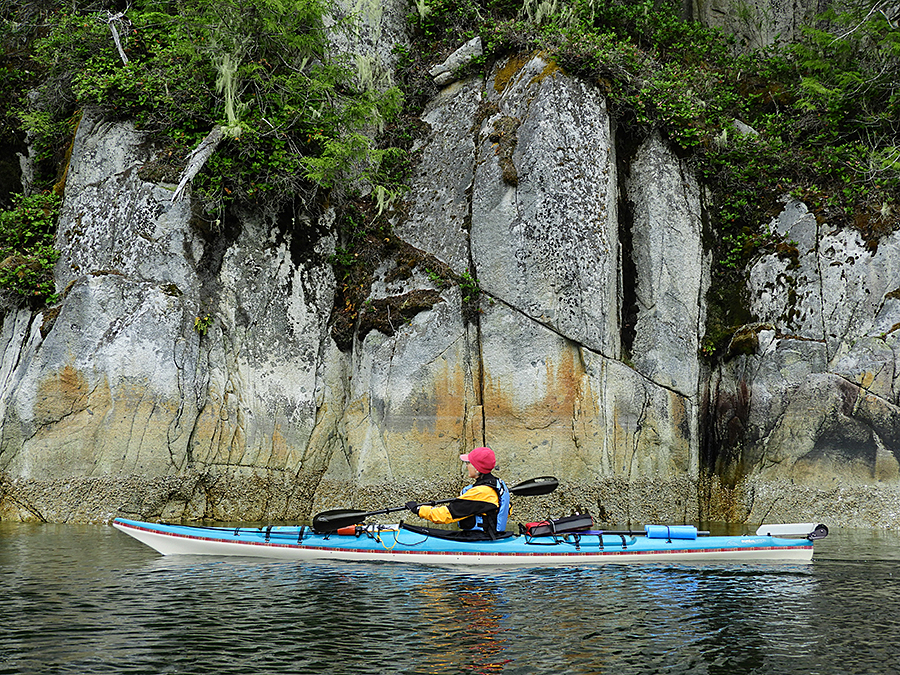
Heather passing one of the colourful oceanside cliffs.
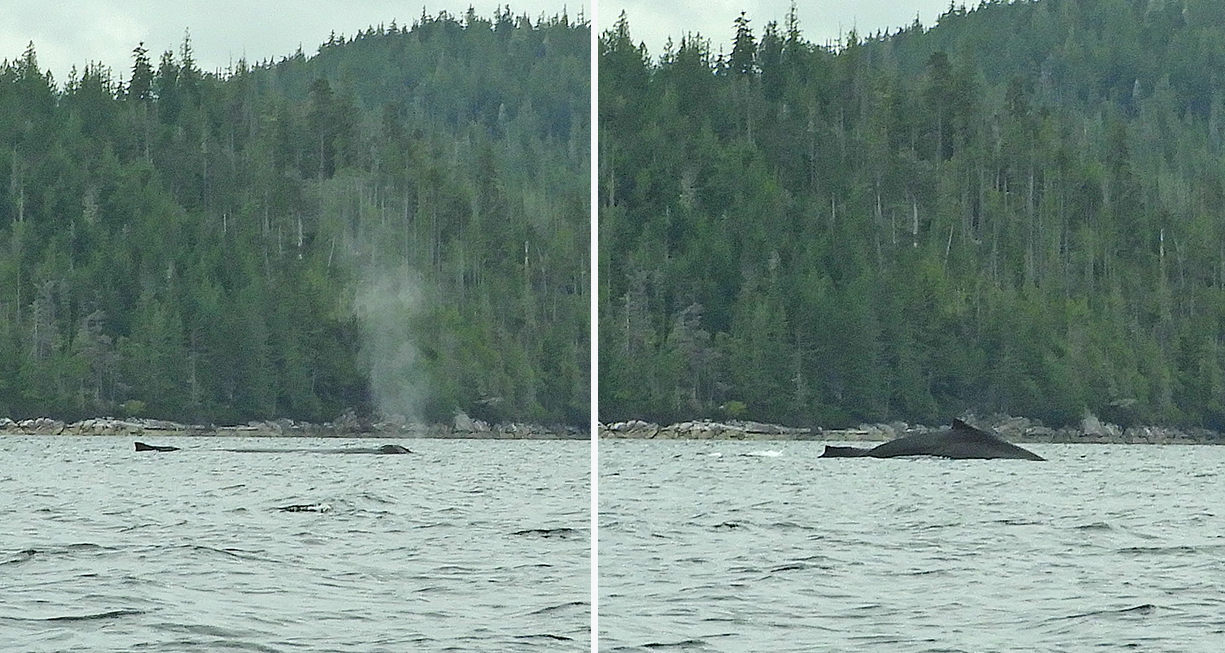
What a thrill to be sitting in a kayak as Humpback Whales pass nearby. We saw this female and her calf on several occasions around Paddlers Inn.
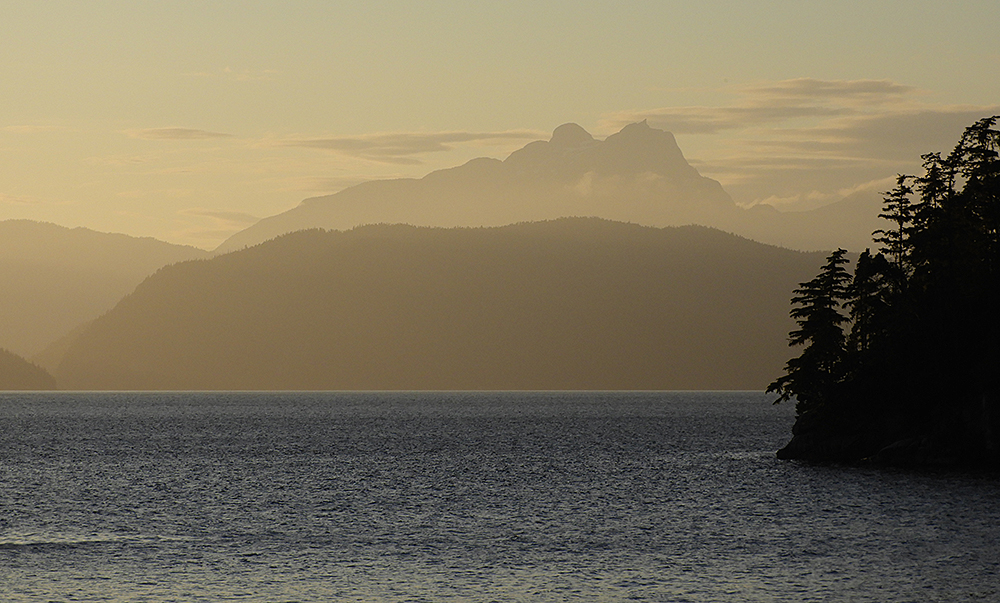
A sunset view from our Paddlers Inn cabin. The impressive high peak in the distance, Mount Spencer, is 3,006 m in elevation, in the Waddington Range.
~~~~~~~~~~~~~~~~~~~~~~~~~~~~~~~~~~~~~~~~~~
